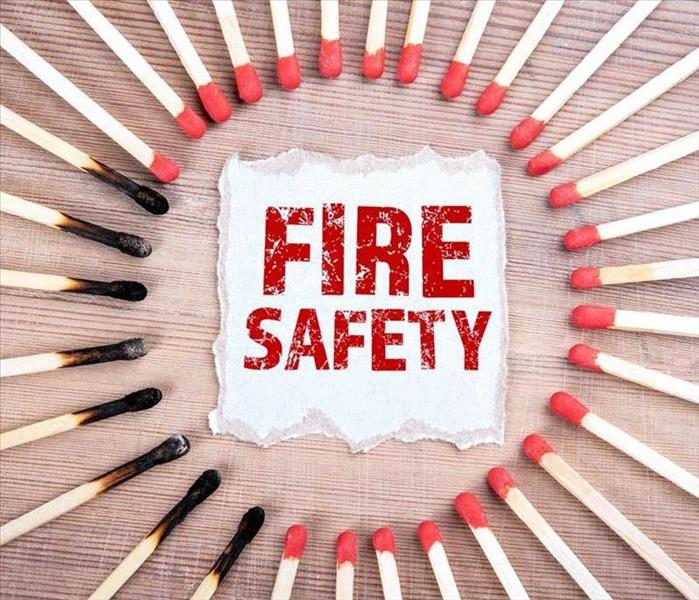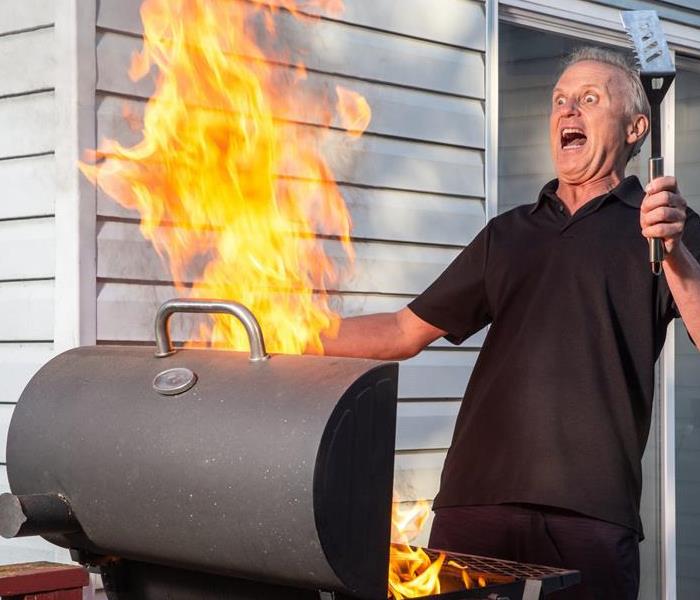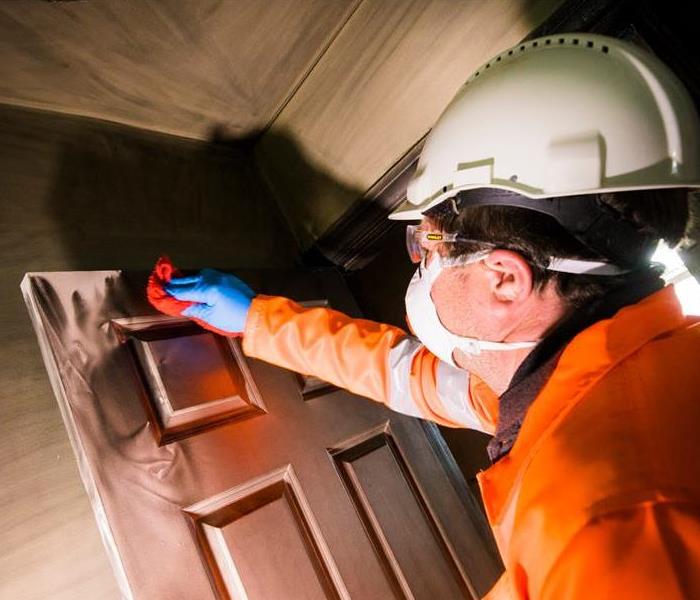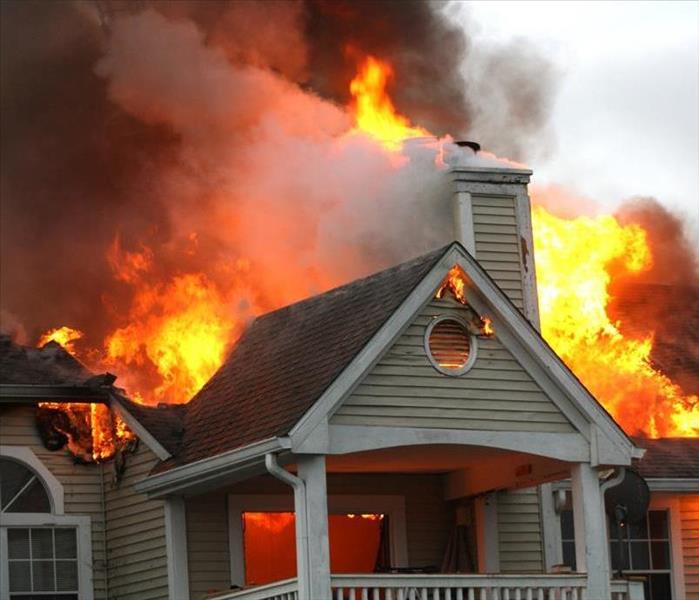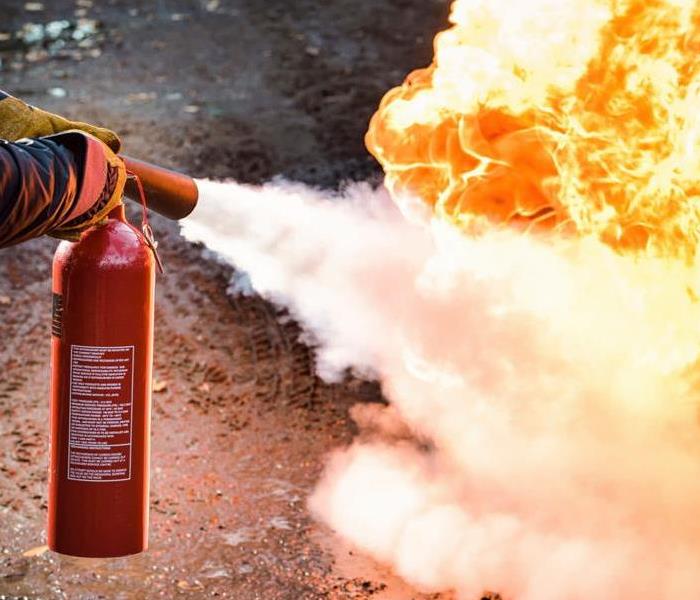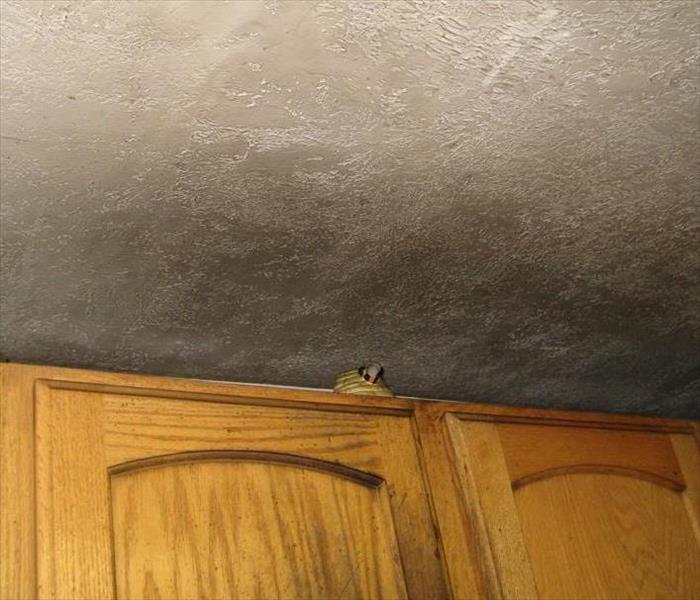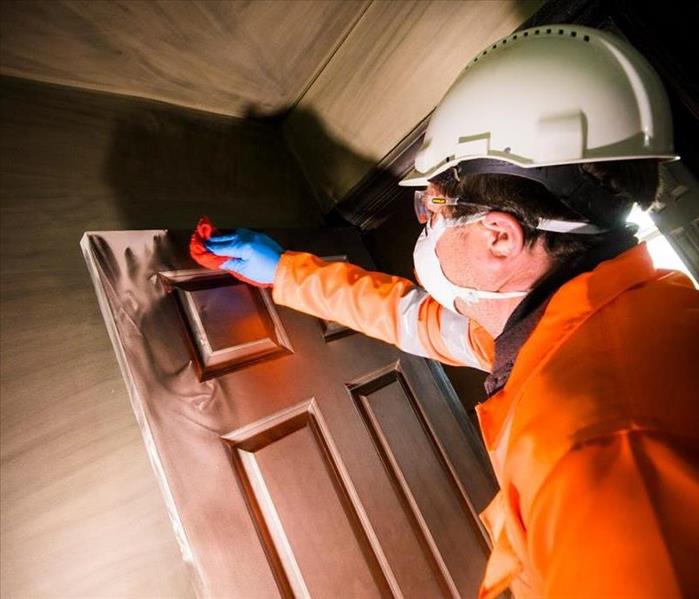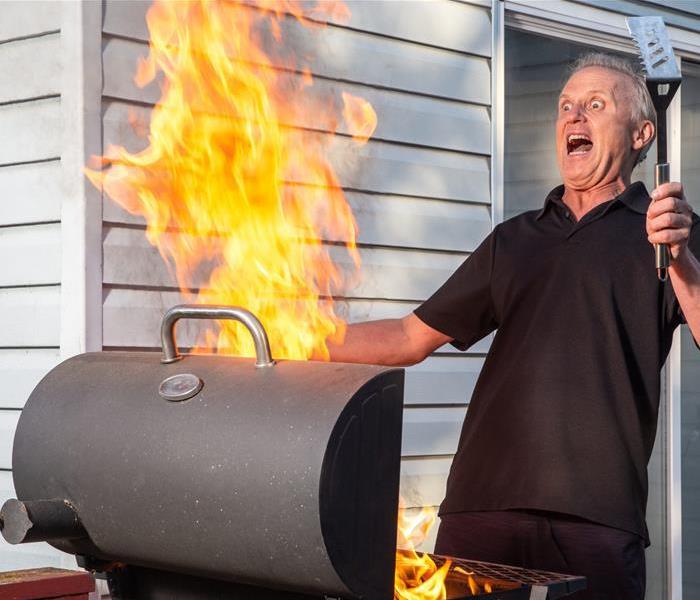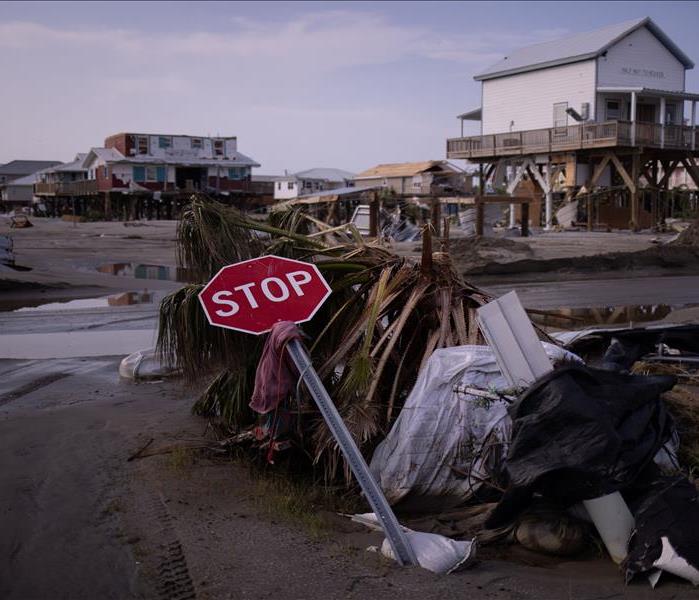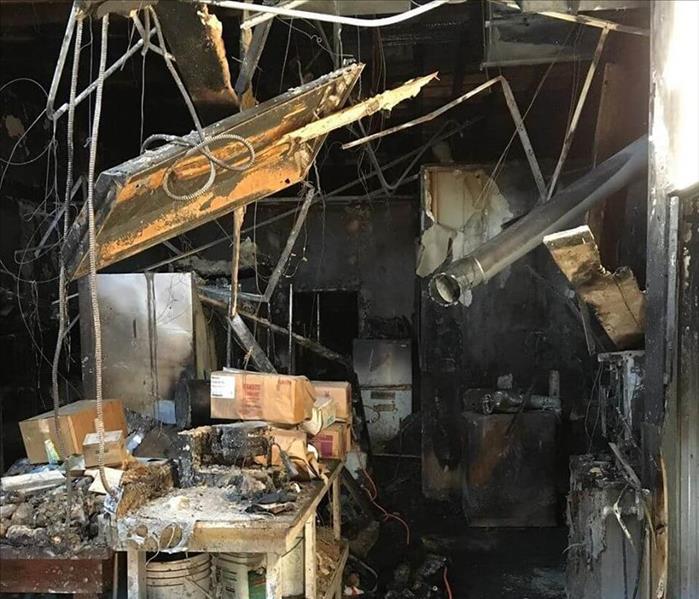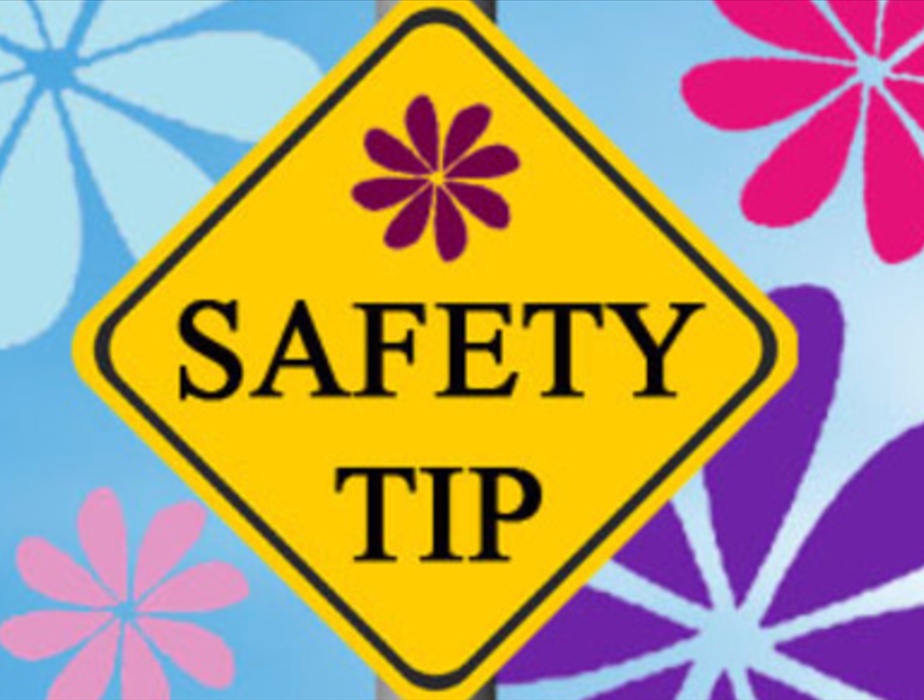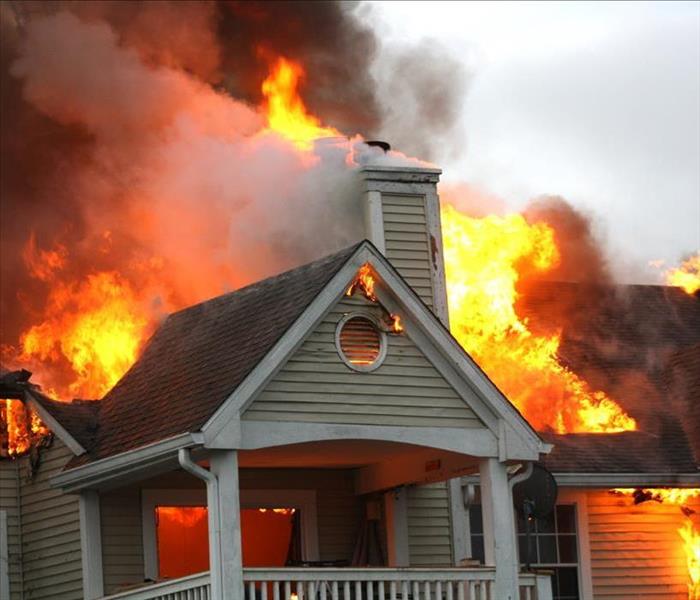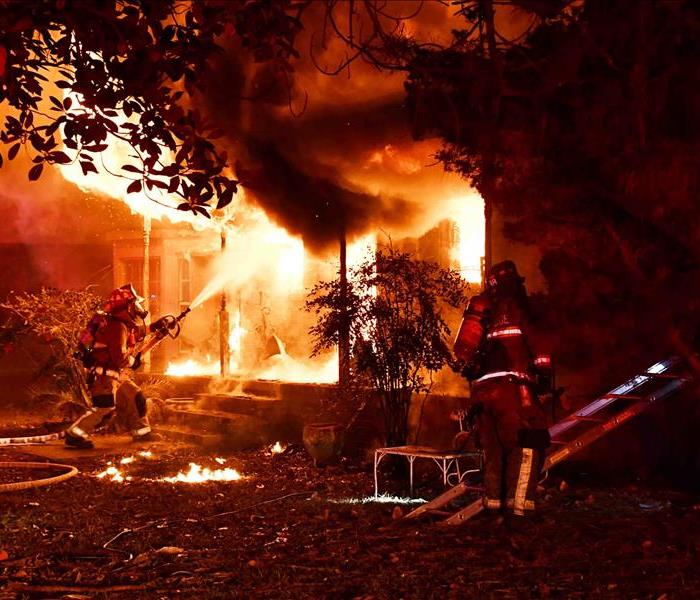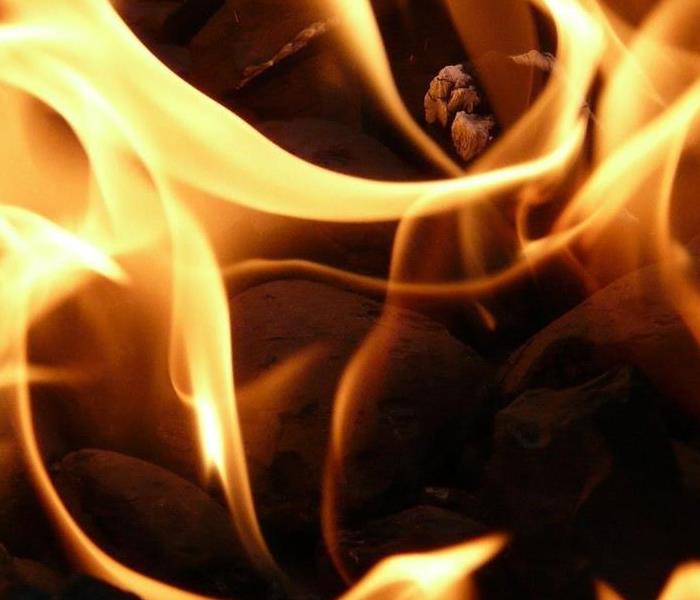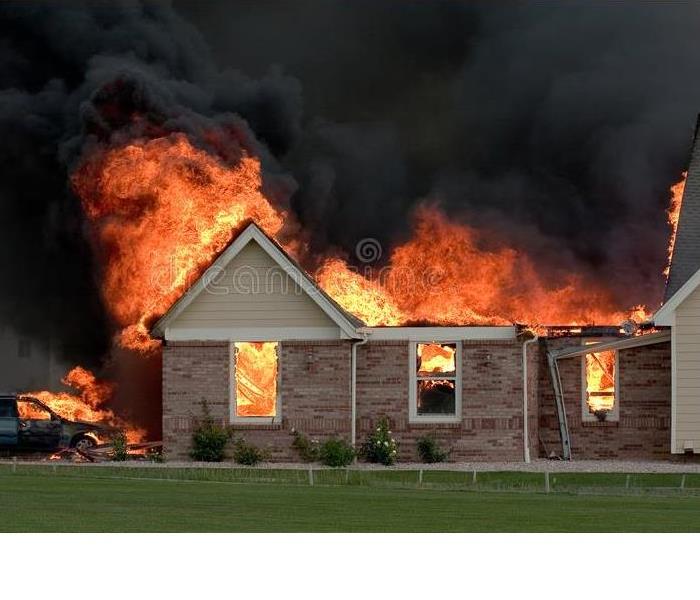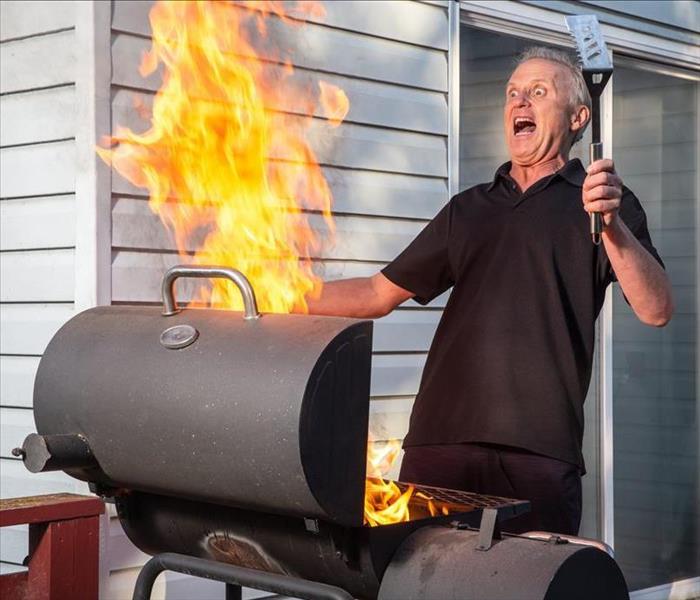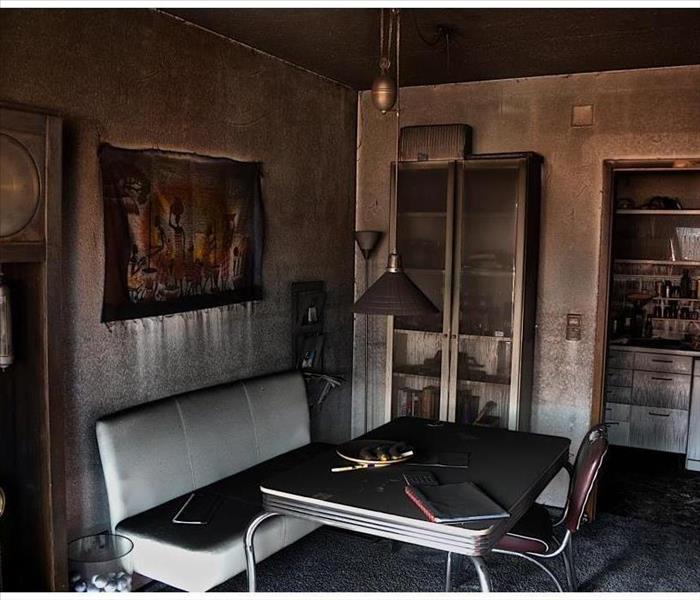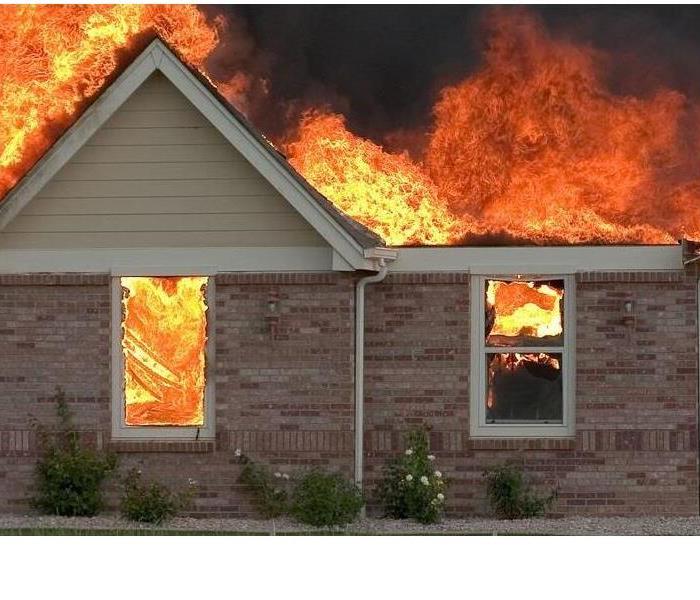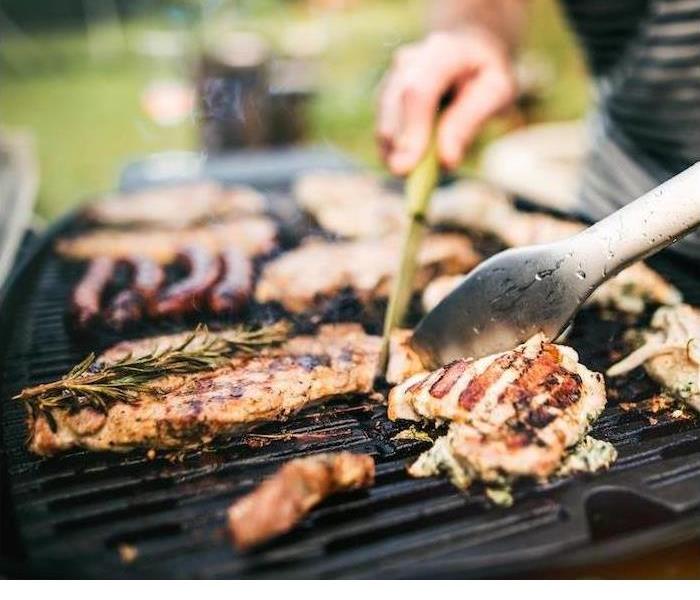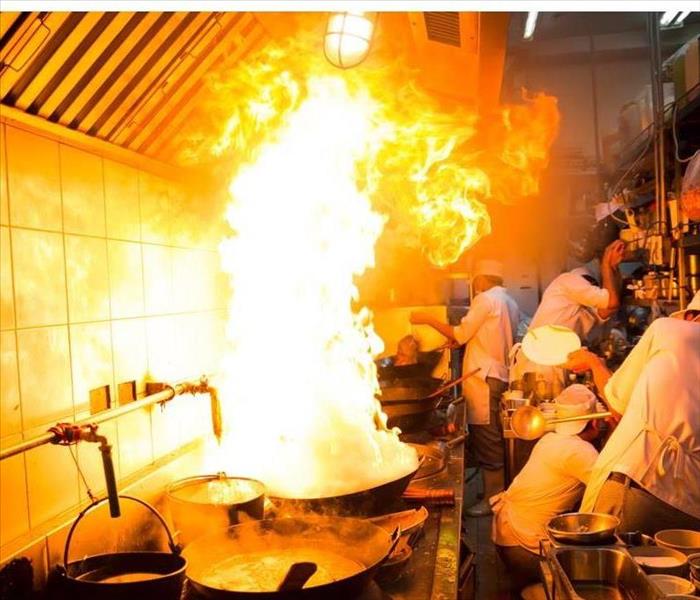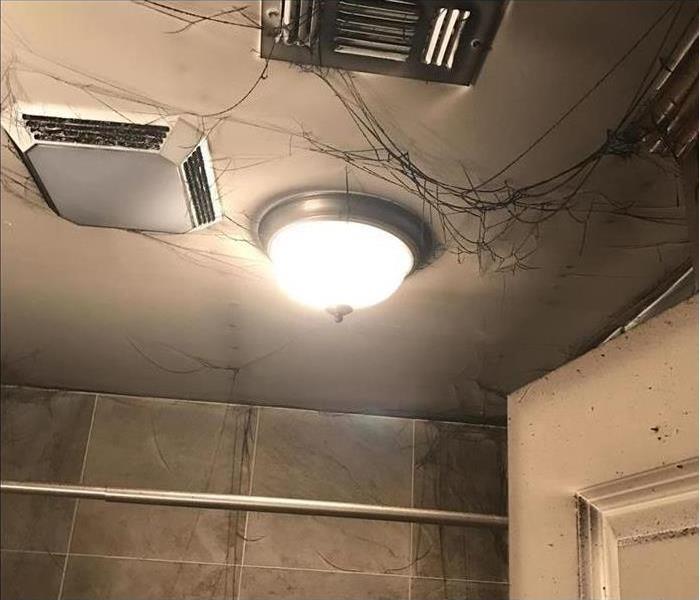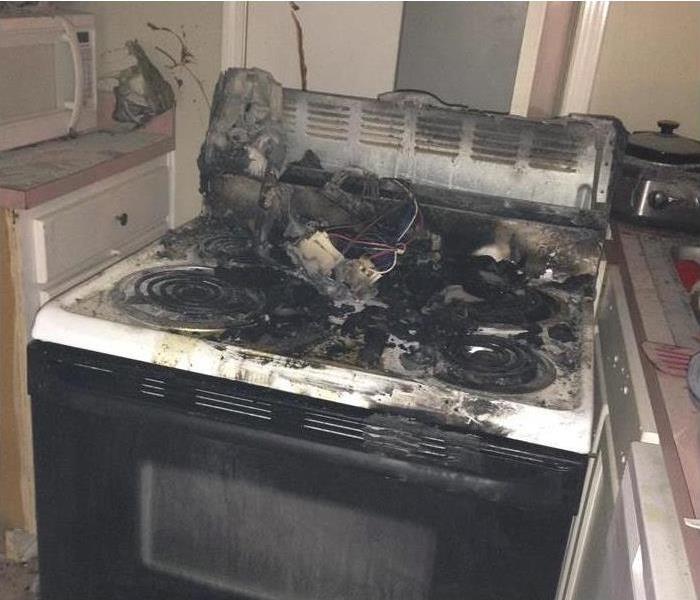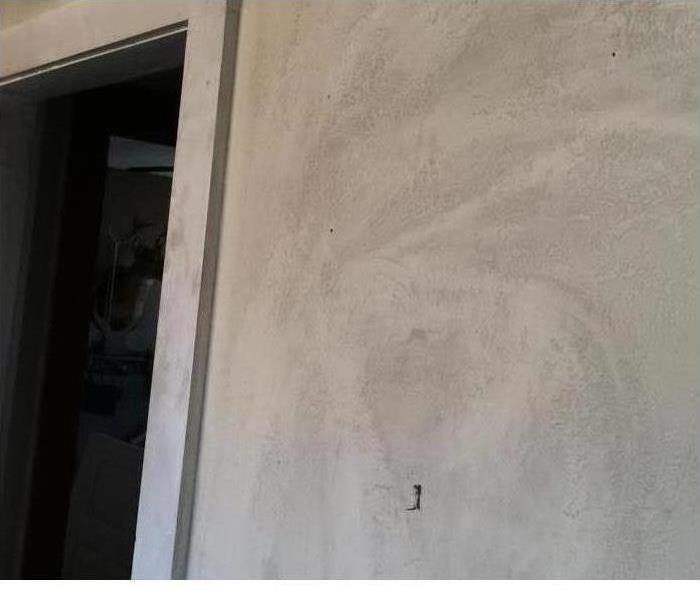Archived Fire Damage Blog Posts
Kitchen Safety: Tips to Prevent Kitchen Fires
2/22/2024 (Permalink)
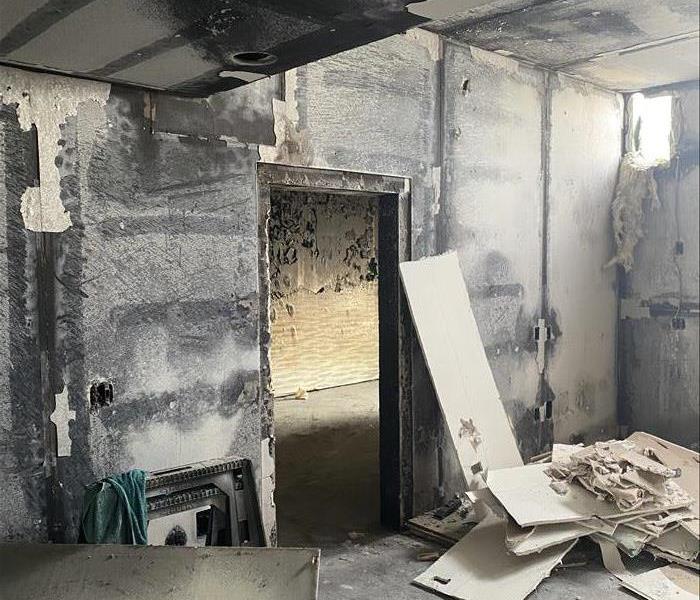 Badly fire damaged room
Badly fire damaged room
Kitchen Safety: Tips to Prevent Kitchen Fires
The kitchen is often considered the heart of the home, where delicious meals are prepared and memories are made. However, it's also a common area for fires to occur, making kitchen safety a top priority for homeowners. At SERVPRO of Pascagoula, we understand the importance of fire prevention, which is why we've compiled a list of essential tips to help you minimize the risk of kitchen fires and keep your home safe.
1. Stay Alert While Cooking: One of the leading causes of kitchen fires is unattended cooking. Always stay in the kitchen when you're cooking on the stovetop, especially when using high heat or frying food. It only takes a moment for a small flame to escalate into a dangerous fire.
2. Keep Flammable Items Away from Heat Sources: Be mindful of where you store flammable items such as kitchen towels, oven mitts, and paper towels. Keep them away from stovetops, ovens, and other heat sources to reduce the risk of accidental ignition.
3. Clean Grease Buildup Regularly: Grease buildup on stovetops, range hoods, and oven surfaces can easily ignite and fuel a fire. Clean these areas regularly to remove grease and prevent potential fire hazards.
4. Use Caution When Cooking with Oil: Cooking with oil can be dangerous if not done properly. Use caution when frying food and never overfill pots or pans with oil. If you notice the oil smoking excessively, turn off the heat immediately and cover the pot to smother any flames.
5. Keep a Fire Extinguisher Handy: Make sure you have a fire extinguisher readily available in the kitchen and know how to use it. A portable fire extinguisher can help you quickly extinguish small fires before they escalate out of control.
6. Install Smoke Alarms: Smoke alarms are essential for early detection of fires, giving you and your family valuable time to evacuate safely. Install smoke alarms in the kitchen and throughout your home, and test them regularly to ensure they're functioning properly.
7. Have an Escape Plan: In the event of a kitchen fire that cannot be extinguished quickly, it's crucial to have an escape plan in place. Discuss evacuation routes with your family and designate a safe meeting point outside the home.
8. Practice Safe Cooking Habits: Practice safe cooking habits such as using oven mitts to handle hot dishes, avoiding wearing loose-fitting clothing that can easily catch fire, and keeping pot handles turned inward to prevent accidental spills.
By following these simple yet effective tips, you can significantly reduce the risk of kitchen fires in your home. At SERVPRO of Pascagoula, we're committed to promoting fire safety and helping homeowners protect their properties. If you ever experience a kitchen fire or any other type of fire damage, don't hesitate to contact us for professional fire damage restoration services.
Click Here
Safeguarding the Season: Common Holiday Fire Hazards and How to Protect Your Home
11/25/2023 (Permalink)
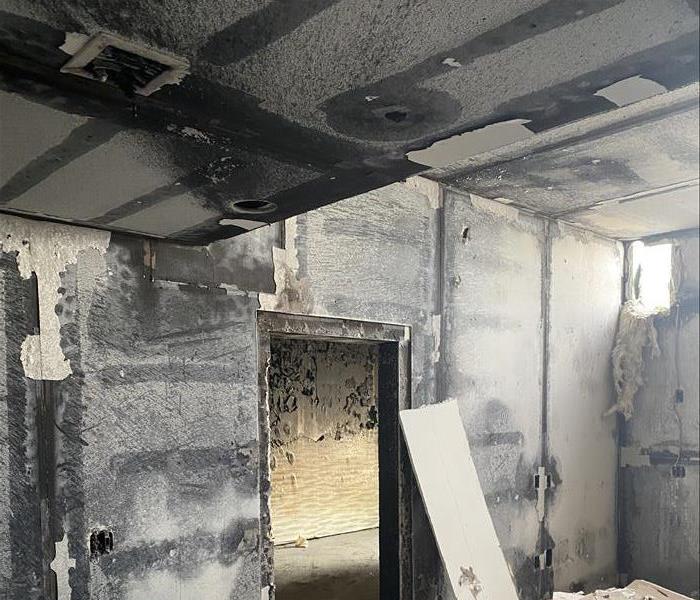 Interior fire damage
Interior fire damage
As the holiday season approaches, the joy and warmth of celebrations fill our hearts and homes. However, amidst the festivities, it's essential to remain vigilant and take measures to protect your home from common holiday fire hazards. In this blog post, SERVPRO shares insights into these potential risks and offers valuable tips to ensure a safe and joyful holiday season.
1. Decorative Lights and Electrical Safety:
Twinkling holiday lights and decorative displays are beloved features of the season. However, they can pose fire hazards if not handled with care:
- Inspect Lights: Before adorning your home, carefully inspect all holiday lights, extension cords, and electrical decorations for signs of damage, frayed wires, or loose connections.
- Outdoor Lights: Only use lights and extension cords specifically rated for outdoor use for your exterior decorations.
- Overloading Outlets: Avoid overloading electrical outlets and power strips with too many decorations, as this can lead to overheating and fires.
- Turn Off Lights: Remember to turn off decorative lights and unplug them when you go to bed or leave your home.
2. Candles and Open Flames:
Candles create a cozy ambiance but require caution to prevent fires:
- Safe Placement: Place candles on stable, heat-resistant surfaces, away from flammable materials such as curtains, decorations, or paper.
- Never Leave Unattended: Never leave lit candles unattended, and extinguish them before leaving a room or going to bed.
- Consider Alternatives: Consider using flameless LED candles as a safer alternative to traditional candles, especially if you have pets or young children.
3. Christmas Trees and Decorations:
Whether real or artificial, Christmas trees and decorations can become fire hazards:
- Water Your Tree: Keep your real Christmas tree well-watered throughout the season, as dry trees are more prone to catching fire.
- Flame-Resistant Decorations: Ensure that artificial trees and decorations are labeled as flame-resistant or flame-retardant.
- Placement Matters: Place trees and decorations away from heat sources like radiators, fireplaces, and candles.
4. Cooking Safety:
The holiday season often involves elaborate feasts, but cooking-related fires are common:
- Stay in the Kitchen: Never leave the kitchen unattended while cooking, especially when using stovetops and ovens.
- Keep Flammable Items Away: Keep flammable items like kitchen towels, oven mitts, and paper towels away from heat sources.
- Timers and Monitoring: Use timers to remind you when dishes are done, and regularly check on food while cooking.
- Fire Extinguisher: Keep a fire extinguisher in the kitchen and know how to use it.
5. Fireplaces and Space Heaters:
As temperatures drop, many turn to fireplaces and space heaters for warmth:
- Fireplace Safety: Use a sturdy screen or glass door to contain sparks and embers from your fireplace.
- Space Heater Precautions: Ensure that space heaters have proper safety features, such as tip-over switches and automatic shut-offs.
- Clear Surroundings: Keep flammable materials, including furniture and decorations, a safe distance away from heaters.
6. Outdoor Lighting and Decorations:
Outdoor decorations can also present fire hazards:
- Use Outdoor-Rated Equipment: Use outdoor-rated extension cords and lighting for exterior decorations.
- Prevent Tripping Hazards: Keep decorations and extension cords clear of walkways to prevent tripping hazards.
- Secure Decorations: Ensure outdoor decorations are securely anchored and won't come into contact with power lines.
Conclusion:
By remaining aware of these common holiday fire hazards and taking preventive measures, you can ensure a safe and joyous holiday season for you and your loved ones. At SERVPRO, we prioritize your safety and well-being, and we're here to support you in preserving the festive spirit while keeping your home secure. Wishing you a happy and safe holiday season!
Rebuilding Dreams: SERVPRO's Expertise in Residential Fire Restoration in Pascagoula
11/16/2023 (Permalink)
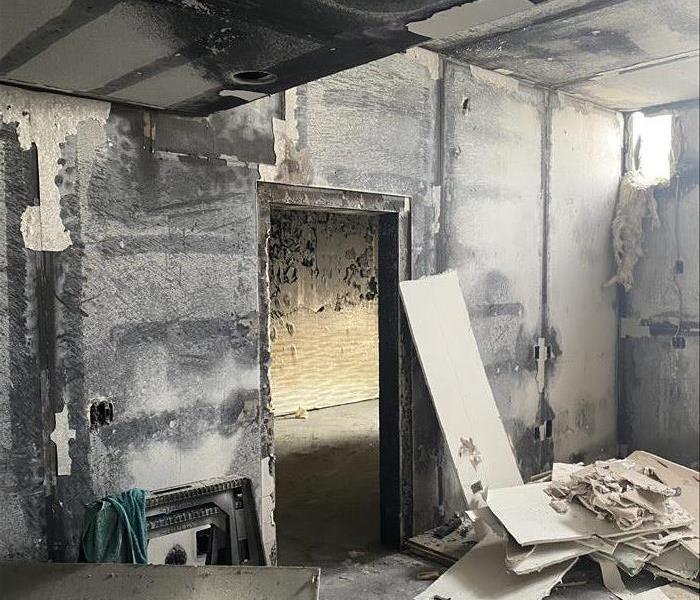 Aftermath of interior fire damage
Aftermath of interior fire damage
In the heart of Pascagoula, Mississippi, homes are more than just structures; they are havens of comfort and security. But when a fire strikes, it can shatter that sense of sanctuary and leave homeowners overwhelmed. Fortunately, residents in Pascagoula can rely on SERVPRO, a trusted name in residential fire restoration services, dedicated to helping homeowners recover from the devastation.
At SERVPRO of Pascagoula, we understand that each residential fire damage situation is unique and calls for a tailored approach. With our extensive experience and unwavering commitment to excellence, we take pride in our ability to handle any residential fire restoration job in Pascagoula, no matter how complex. Let's explore the SERVPRO fire restoration process and how we bring relief to homeowners in Pascagoula.
1. Swift Response: In the aftermath of a fire, time is of the essence. Our first step is a rapid response. SERVPRO of Pascagoula operates 24/7, ready to mobilize at a moment's notice. A quick response can significantly reduce the extent of damage and prevent secondary issues, such as mold growth.
2. Detailed Evaluation: Upon arrival at the residential property, our certified technicians conduct a thorough assessment. We identify the scope of the damage, assess structural stability, and craft a detailed restoration plan tailored to the unique needs of Pascagoula homeowners.
3. Meticulous Cleanup: The next phase involves cleaning up the aftermath of the fire. This includes removing debris, soot, and smoke residues from all affected areas. Our advanced cleaning techniques and equipment ensure that every surface is meticulously restored.
4. Water Mitigation and Drying: Water damage often accompanies fire damage due to firefighting efforts. SERVPRO is equipped to handle water extraction and drying processes to prevent further damage and mold growth. We use industrial-grade equipment, including dehumidifiers and air movers, to restore optimal moisture levels.
5. Odor Elimination: Unpleasant odors can linger long after a fire. SERVPRO's technicians are experts in smoke and odor removal. We employ specialized equipment and techniques to eliminate odors, ensuring that Pascagoula homeowners can return to a clean and comfortable environment.
6. Structural Restoration: Restoring the structural integrity of the residential property is a crucial step. Whether it involves rebuilding walls, replacing damaged flooring, or repairing the roof, SERVPRO has the resources and expertise to handle any structural restoration task.
Success Stories in Pascagoula: In Pascagoula, Mississippi, we have witnessed SERVPRO's remarkable capabilities through their successful residential fire restoration projects. You can find examples on their website where they share stories of how they helped Pascagoula homeowners rebuild their lives after devastating fires. Their prompt response and skilled technicians played a pivotal role in restoring the properties to their former glory, ensuring Pascagoula residents can once again find comfort and security in their homes.
In conclusion, when fire damage strikes a residential property in Pascagoula, MS, SERVPRO of Pascagoula is the trusted partner you can rely on for comprehensive fire restoration services. Their dedication, expertise, and state-of-the-art equipment ensure that they can handle any job, no matter the size or complexity. From immediate response to structural restoration, SERVPRO is committed to helping Pascagoula homeowners recover from the devastation of fire damage.
If you are a homeowner in Pascagoula in need of residential fire restoration services, don't hesitate to contact SERVPRO of Pascagoula. They are here to help you restore your home and bring back the sense of comfort and security that is so important to you and your family.
Things To Teach The Family In Case Of An Overnight Fire
10/24/2022 (Permalink)
Do the kids know what to do?
Do they know where to go?
What happens after the alarm stops?
Gather everyone in your household and make a plan. Walk through your home and inspect all possible exits and escape routes. Households with children should consider drawing a floor plan of your home, marking two ways out of each room, including windows and doors. Also, mark the location of each smoke alarm.
Practice your home fire escape plan twice a year, making the drill as realistic as possible.
Allow children to master fire escape planning and practice before holding a fire drill at night when they are sleeping. The subject is to practice, not frighten, so telling children there will be a drill before they go to bed can be as effective as a surprise drill.
Choose an outside meeting place (i.e. neighbor's house, a light post, mailbox, or stop sign) a safe distance in front of your home where everyone can meet after they've escaped. Make sure to mark the location of the meeting place on your escape plan.
Once you're out, stay out! Under no circumstances should you ever go back into a burning building. If someone is missing, inform the fire department dispatcher when you call. Firefighters have the skills and equipment to perform rescues.
Once the emergency crews leave call us, we will do what is needed to get you back into your clean home, "like it never even happened."
Give Us A Call To Get Rid Of The Terrible Smoke Smell
10/22/2022 (Permalink)
This is a large commercial fire damage we produced as a result of an electrical malfunction. SERVPRO of Pascagoula had a first responder on site quickly to expedite cleaning, demolition, and deodorization scope and planning. As this was a gymnasium, the vast majority of space was warehouse, with built-in tiered offices and party rooms. Total affected space in the building was 15,500 square feet, which made for an enormous amount of volume to conduct final deodorization. After weeks of demolition and specialized cleaning, we conducted thermal fogging for the final deodorization. Our two technicians donned their proper PPE (Personal Protective Equipment), and fogged the entire cubic area of the gym. The photo shows the fogging after disperse, with the capability of it penetrating into high and small cavities
Reasons You Need To Call SERVPRO After A Fire
10/21/2022 (Permalink)
When a fire happens, it causes soot. (Soot: A black powdery or flaky substance consisting largely of amorphous carbon, produced by the incomplete burning of organic matter.) If the HVAC system is on during a fire then it can spread the soot in the house by circulating the air throughout.
While it may take some time to remediate a fire, it is important that the soot is wiped down with appropriate cleaning agents and in a timely manner. If soot is left on any surface to long it can breakdown that surface and cause damage to walls, furniture, and other surfaces.
This picture shows just one wipe down of a wall in the home where we did a structure clean after a fire. Some surfaces can take longer to clean, depending on the texture of the wall and how much soot there is on the surface.
Highly Trained Restoration Specialists
Our SERVPRO Professionals are highly trained in property restoration. From initial and ongoing training at SERVPRO's Corporate Training Facility to regular IICRC industry certifications, our Professionals are equipped with the knowledge to restore your property. The SERVPRO training program includes the follow:
- IICRC Training
- Employee Certification Training
- Initial Franchise Training
- e-Learnings
- Continuing Education Classes
Fire Extinguishers Facts From The Pros
10/17/2022 (Permalink)
You could save your home from fire with a fire extinguisher at your ready.
Close your eyes and imagine. You’re at home, or maybe in the office, and you smell ... smoke? Definitely smoke. Fire! You don’t panic, because you’re not the type and you’re prepared. You grab the nearest fire extinguisher, find the flames. You get ready, aim.... and suddenly realize you don’t know how this thing works.
Fire extinguishers can be the first line of defense if fire breaks out in your home or business, but they won’t do you any good if you don’t know how to use them or have the wrong extinguisher for the job. When it comes to fire, plan, prepare and remain calm. Knowing how, when and why to use your fire extinguisher—not to mention which fire extinguisher to use—will increase both your safety and peace of mind knowing you can protect you and your belonging from fire damage.
When to Use a Fire Extinguisher
Home or office, when a fire breaks out you have moments to decide: fight or flight? If you feel even the slightest doubt about handling it yourself, move everyone to a safe place and call 911. Ditto if you don’t know how to use your extinguisher or aren’t sure it’s the right class for the fire you’re fighting; better to let the pros handle it than to try to navigate the learning curve mid-fire.
If you decide you can safely put out the fire, grab the extinguisher and get busy, after you locate a safe way out. If you spot a clear exit but it doesn’t look to stay clear long, get out now.
What Kind of Extinguisher to Use
Home- and business owners can choose from five types of fire extinguishers:
- Class A: for a fire involving normal combustibles and flammables, including cloth, paper and wood
- Class B: for a fire involving flammable liquids like gas, oil, paint, paint thinner and solvents
- Class C: to fight a fire involving electrical equipment/appliances that are plugged in and receiving power—electric drills, table saws, computer equipment, televisions, wiring and fuse boxes, for example
- Class D: to put out a fire involving combustible metals—magnesium, sodium, zirconium, etc. (Note: Don’t try to fight this kind of fire unless you’ve been specifically trained for it!)
- Class K: for fires typically found in restaurants, involving cooking oil and commercial-grade cooking equipment
Some fires involve several or all of the above. Fortunately, fire extinguishers are labeled not only with the types of fire they’re designed to fight, but with the types of fire you should avoid using them on. Example: Never use a Class A extinguisher on a Class B or C fire—the results could be deadly!
Fire Extinguisher How-to
- Stand six to eight feet away from the flames.
- Make sure you have a clear exit, in case the fire spreads or flames out of control.
- Pull the pin to unlock the operating lever.
- Aim the hose at the base of the fire.
- Press the lever located above the handle to release the agent.
- Use a back-and-forth sweeping motion to saturate the base of the fire until the flames are extinguished.
- Continue the process if the fire re-ignites.
- If the fire doesn’t go out or spreads, get to safety.
Extinguisher Safety Tips
- Install fire extinguishers in areas where fires are likely to break out, including kitchens and break rooms.
- Check periodically to make sure all fire extinguishers are fully charged.
- Show every family member or employee where the fire extinguishers and fire alarms are located.
- Train yourself, your loved ones and your co-workers to use the equipment properly.
Even with a fire extinguisher, some fire damage will occur. When this happens, call your local SERVPRO (228)396-3965. They live and work in the local community just like you and they can help make it, "Like it never even happened."
Some of the most common causes of fires in the home
10/1/2022 (Permalink)
Home electrical fires account for 51,000 fires each year, and an estimated $1.3 billion in property damage. Learn these common causes of fire damage to prevent fire damage in your home or business:
Many electrical fires are caused by faulty electrical outlets or outdated appliances. Frayed appliance cords can also lead to electrical fires. Under no circumstances should you ever remove the ground plug from an appliance cord. These appliance cords are only to be used with outlets that can handle the extra amount of electricity.
Another cause of electrical fires is the misuse of extension cords. Extension cords are only to be used on a temporary basis and not as permanent wiring. Extension cords can overheat and cause fires when not used properly. Never should you run extension cords through walls and ceilings, and never use nails or staples to hold an extension cord in place.
Space heaters are also a major cause of electrical fires. Space heaters should always be kept on a flat, level surface to prevent being turned over. These portable heaters are often placed too close to curtains, beds, and other combustible surfaces. Remember to always keep space heaters at least three feet from items that can burn.
Safety First When Using Extension Cords
9/23/2022 (Permalink)
Extension cords are one of the most commonly misused items in a home and at the office. To ensure safety use these following tips when using extension cords.
- Determine the correct wattage required to power the device and be sure to select the correct size of the extension cord. If connecting two or more devices, add together the wattage rating for all devices to prevent overload.
- Select the appropriate extension cord for using devices indoor or outdoor.
- Do not use extension cords that are cut or damaged. Touching the exposed strand of wire can give someone electric shock or burn.
- Be sure to unplug extension cords when finished using due to the cord will still conduct electricity until it is unplugged.
- Running a cord under carpet or across a doorway is unsafe.
Soot and Smoke Removal After The Fire
9/13/2022 (Permalink)
When a fire happens, it causes soot. (Soot: A black, powdery, or flaky substance consisting largely of amorphous carbon, produced by the incomplete burning of organic matter.) If the HVAC system is on during a fire, it can spread the soot in the house by circulating the air throughout.
While it may take some time to remediate a fire, it is important that the soot is wiped down with appropriate cleaning agents and in a timely manner. If soot is left on any surface too long, it can break down that surface and cause damage to walls, furniture, and other surfaces.
SERVPRO of Biloxi, Ocean Springs, Gulfport, and Pascagoula can do Fire restoration.
This picture shows just one wipe down of a wall in the home where we did a structure clean after a fire. Some surfaces can take longer to clean, depending on the texture of the wall and how much soot there is on the surface.
Here At SERVPRO We Are Trained To Eliminate Odors After A Fire
9/12/2022 (Permalink)
As experts in deodorization, SERVPRO of Pascagoula is trained to eliminate odors.
Fires can be especially devastating to your home or business. After the fire trucks leave, your property will likely suffer from not only fire and smoke damage, but also widespread water damage and flooding from firefighting efforts. SERVPRO Franchise Professionals have specialized in fire and water damage restoration training and experience to quickly clean up and restore your home to pre-fire condition. They also can remove the pervasive smoke odor by doing Thermal fogging.
What is Thermal fogging?
Thermal fogging is an effective smoke odor removal procedure because it recreates the fire related properties of heat and pressurization. Porous material pick up thermally activated deodorant droplets in the same manner in which they picked up the smoke odors, closely duplicating what occurs during a fire.
HOW IT WORKS:
Negative pressure is created by the gas flow to the engine tube, causing the intake valves to open. This allows more air to pass through the venturi of the carburetor, which aspirates fuel from the carburetor in a combustion chamber mixture that is ignited by the spark plug at many times per second. The exhaust emission of a pulse-jet engine is low in pollutant components because the combustion is completed and burned to non-pollutant end products.
Call SERVPRO for any questions or services.
228-396-3965
Safety Tips For Extension Cords
9/9/2022 (Permalink)
Extension cords are one of the most commonly misused items in a home and at the office. To ensure safety use these following tips when using extension cords.
- Determine the correct wattage required to power the device and be sure to select the correct size of the extension cord. If connecting two or more devices, add together the wattage rating for all devices to prevent overload.
- Select the appropriate extension cord for using devices indoor or outdoor.
- Do not use extension cords that are cut or damaged. Touching the exposed strand of wire can give someone electric shock or burn.
- Be sure to unplug extension cords when finished using due to the cord will still conduct electricity until it is unplugged.
- Running a cord under carpet or across a doorway is unsafe.
Common Causes of Fire Damage
9/9/2022 (Permalink)
Home electrical fires account for 51,000 fires each year, and an estimated $1.3 billion in property damage. Learn these common causes of fire damage to prevent fire damage in your home or business:
Many electrical fires are caused by faulty electrical outlets or outdated appliances. Frayed appliance cords can also lead to electrical fires. Under no circumstances should you ever remove the ground plug from an appliance cord. These appliance cords are only to be used with outlets that can handle the extra amount of electricity.
Another cause of electrical fires is the misuse of extension cords. Extension cords are only to be used on a temporary basis and not as permanent wiring. Extension cords can overheat and cause fires when not used properly. Never should you run extension cords through walls and ceilings, and never use nails or staples to hold an extension cord in place.
Space heaters are also a major cause of electrical fires. Space heaters should always be kept on a flat, level surface to prevent being turned over. These portable heaters are often placed too close to curtains, beds, and other combustible surfaces. Remember to always keep space heaters at least three feet from items that can burn.
We Are Always Here To Help!
8/13/2022 (Permalink)
Gulfport, MS Fire Damage Restoration including Smoke and Soot Cleanup| SERVPRO of Biloxi / Ocean Springs / Gulfport.
Our Fire Damage Restoration Services
Every fire damage situation is a little different and requires a unique solution, but the general process stays the same. When various materials burn, the soot they create differs greatly and requires a specific cleaning procedure. The steps listed below illustrate our process for the “typical” fire damage restoration. Learn more about our fire damage restoration process.
- Emergency Contact
- Inspection and Fire Damage Assessment
- Immediate Board-Up and Roof Tarp Service (if needed)
- Water Removal and Drying (if water damage is present)
- Removal of Smoke and Soot from All Surfaces
- Cleaning and Repair
- Restoration
We are Always Here to Help! 228-396-3965
It's Summer Time and the Weather Isn't The Only Thing Hot During The Summer
8/11/2022 (Permalink)
Summer is a time to get out and have fun. The weather is not the only thing that heats up during these few months.
Be aware of the risk of fires and prepare by checking the batteries in your smoke detectors and having functioning fire extinguishers.
5,700 homes experience grill related fires every year. In fact, 57% of fires happen within four months; May, June, July, and August. Grill fires happen when someone mishandles the igniting of the grill with a spark or flame. Mechanical issues such as broken containers or pipes also can increase the risk of causing a fire.
For precautionary measures, before the startup of grilling season check your grills condition, clean it, check the drip pan, and anything else that could potentially have grease on it from previous cookouts. Inspect each part of your barbecue pit to make sure everything is attached properly. Also, be sure you are in a grill-friendly environment free of branches, roofs or any sort of overhang when igniting the grill. Be prepared for a fire, as grease and fat are likely to catch on fire. Keep baking soda near the grill in case a grease fire breakout. If you find yourself faced with a fire emergency, do not hesitate to call SERVPRO of Biloxi, Ocean Springs, Gulfport, and Pascagoula at 228-396-3965.
Practice Grill Safety Every Time!
8/10/2022 (Permalink)
For most people during the summer months, the grill is likely the source of the majority of your meals—and for good reason! There is nothing better than grilling your dinner and enjoying a family meal outside, but because it is such a regular activity, it can be one where people forget to take the proper safety precautions if they are not a habit.
Around 5,700 grill fires occur annually as reported by the U.S. Fire Administration, and they can be quite a costly occurrence to your patio and even to your home. Getting in the habit of always practicing fire safety when grilling is the best thing you can do to protect and enjoy yourself.
Get Into the Habit of Grilling Safely
Create a safe zone around your grill. Though walking out your back door and being at your grill sounds ideal, it can lead to a serious issue if a fire were to start. A grill flare-up can span several feet, so if your grill is near wood deck railing, vinyl siding or anything else flammable, it can start a fire immediately. Creating a safe zone of at least three feet around your grill at all times is recommended.
Clean your grill grates often. Food particles can build up on the grill over time, creating a prime opportunity for a grease fire to break out on your grates. It is important to get into good cleaning habits so food does not have the opportunity to stay stuck on the grill for long—just giving the grill a quick brush after each use should suffice.
Never leave the grill unattended. Though grills may feel safer to walk away from due to their lid, even with the lid closed, they can start a fire in an instant. Treat the grill just as you would your kitchen stove or a bonfire and never walk away from it once it is lit. You should also put a fire extinguisher within arm’s reach just in case a flame does begin to get out of hand.
Inspect the grill regularly. If you are using charcoal to grill, you will not have to worry about propane tanks and lines. However, on a gas grill, you should check your system carefully every time you use it. Leaks around your propane tank or worn hoses can become a huge fire hazard once a flame is introduced, so a quick inspection is advised.
If you have a grill fire do damage to your home, we are here to help. You can call us any time, day or night, to have a quick response from our restoration experts.
How to Establish a Fire Drill Procedure
8/10/2022 (Permalink)
Being prepared for changes is part of owning your own business, but have you considered how a fire could change your plans? The risk of a commercial fire is huge for businesses, and if you have employees who work on-site, it is important to make sure they are prepared for the possibility as well.
Establishing a fire drill procedure is a great way to keep everyone safe and informed regarding the steps to take if a fire breaks out. Here’s how to do it:
Planning a Fire Drill Schedule for Your Business
Consult with your local fire officials. Talking with local fire officials is a great jumping-off point for implementing any type of fire safety plan. They can talk you through the specifics of your layout so you can effectively plan evacuation routes and they can also discuss your overall fire risk so you can increase your fire safety throughout the building.
Communicate and mark fire evacuation routes. Once you have your evacuation routes set, mark them clearly with signs and communicate with staff on what this means. Involving your employees in the fire safety process will make everyone feel safer and prepare them ahead of time for when you start scheduling regular drills.
Have fire drills frequently. The first moments of a fire can be a scary time, but they are also the most crucial to getting to safety. Fires can spread rapidly, which is why reducing panic and getting everyone out of the building quickly is so important. Regular fire drills can help with this, as everyone will know exactly what to do and where to go from their rehearsals.
Run different fire scenarios. No two fires are identical, so your fire drills should not be identical either. Make sure to practice a variety of scenarios so your staff is prepared for anything—experiment by having the fake fire “originate” in different places or blocking some fire exits to better emulate a real-world scenario so your staff can be safe no matter what.
If your business has experienced fire damage, you can count on us. We specialize in commercial fire restoration and will be here for you at any hour—contact us today.
Handling Fire Damage At Your Home.
8/10/2022 (Permalink)
If you have experienced a house fire, you understand exactly how disheartening it can be. Even for fires that are put out right away, smoke, soot and flames can still cause significant damages in a short span of time and be a traumatizing experience.
Though the aftermath is difficult to navigate, we have assembled some tips for helping you navigate the aftermath of a fire so you can make sure you are handling it as efficiently as possible.
Tips to Help You Navigate the Aftermath of a Fire
Prepare yourself for what to expect. While we have likely all seen photos or videos of fire damage, seeing it firsthand in your own home is always different. To allow smoke to escape, firefighters often break glass and doors, and because of how smoke travels, soot may be on items that were nowhere near the flames. If the fire was extinguished with water, there may also be moisture damage to items nearby as well.
Wait to enter your home. Though things may appear to not be damaged enough to make your home a hazard, never enter without first checking with officials to determine that everything is safe. A fire can undermine a home’s structural elements via invisible damage, and a second combustion may even be possible depending on the source of the fire. Make sure to always wait for the OK before reentering your home.
Contact your insurance company. Once you can reenter the home and assess the damage, you should contact your insurance provider to let them know what happened and learn about coverage in the event of a fire. It is important to not make any changes to the home before you contact them in order to not unwittingly do something to sabotage your claim.
Document the damages. To help you prepare for your insurance claim before you begin cleaning up, take a complete inventory of what has been damaged and be sure to snap clear photographs. This will not only help your claim, but it will also help you keep track of what to replace around the house.
Contact your restoration company. Working with the right restoration company can really make all the difference during your recovery period after a fire. Fires take a significant emotional toll on the entire family, so working with a company that you trust is a great way to gain peace of mind throughout the recovery process.
If your home is damaged in a house fire, you can count on us to help you. Get in touch at any hour for a quick response.
Our Fire Restoration Services
8/1/2022 (Permalink)
Gulfport, MS Fire Damage Restoration including Smoke and Soot Cleanup| SERVPRO of Biloxi / Ocean Springs / Gulfport / Pascagoula
Our Fire Damage Restoration Services
Every fire damage situation is a little different and requires a unique solution, but the general process stays the same. When various materials burn, the soot they create differs greatly and requires a specific cleaning procedure. The steps listed below illustrate our process for the “typical” fire damage restoration. Learn more about our fire damage restoration process.
- Emergency Contact
- Inspection and Fire Damage Assessment
- Immediate Board-Up and Roof Tarp Service (if needed)
- Water Removal and Drying (if water damage is present)
- Removal of Smoke and Soot from All Surfaces
- Cleaning and Repair
- Restoration
We are Always Here to Help! 228-396-3965
Every fire damage situation is a little different and requires a unique solution,
7/22/2022 (Permalink)
Pascagoula, MS Fire Damage Restoration including Smoke and Soot Cleanup| SERVPRO of Biloxi / Ocean Springs / Gulfport/Pascagoula
Our Fire Damage Restoration Services
Every fire damage situation is a little different and requires a unique solution, but the general process stays the same. When various materials burn, the soot they create differs greatly and requires a specific cleaning procedure. The steps listed below illustrate our process for the “typical” fire damage restoration. Learn more about our fire damage restoration process.
- Emergency Contact
- Inspection and Fire Damage Assessment
- Immediate Board-Up and Roof Tarp Service (if needed)
- Water Removal and Drying (if water damage is present)
- Removal of Smoke and Soot from All Surfaces
- Cleaning and Repair
- Restoration
We are Always Here to Help! 228-396-3965
Summer Cooking Fire Safety Tips
7/21/2022 (Permalink)
The Summer is upon us and we will be doing more cooking. And unless you live on takeout and fast food, cooking is necessary to feed your family. But not all of us were born Emeril Lagasse or Gordon Ramsay. We novice chefs need a little more help. And sometimes, accidents happen. According to the NFPA (National Fire Prevention Association) Two-thirds (67%) of home cooking fires started with the ignition of food or other cooking materials. Before you cook up a disaster, know how to put out potential fires.
How to prevent a kitchen fire
Stay nearby, this sounds unnecessary to say but unattended cooking was by far the leading contributing factor in fires between 2007 -20011.
According to the NFPA, unattended cooking is the leading cause of kitchen fires. Don’t leave your boiling spaghetti alone!
Place your products elsewhere
Keep your towels, paper towels and pot holders away from open flames because they pose a fire hazard.
Have the proper tools
Besides a lid and a fire extinguisher, ensure smoke detectors are working properly test them biannually.
What to use to put out kitchen fire
Cookware lid
When cooking on a stove top, always keep a lid nearby that fits the pot or pan you’re using. That way, if the food catches fire, you can put the lid on to quickly smother the flames.
Salt
Use a handful of salt, which cuts off the oxygen supply and smothers the fire.
Baking soda
Like salt, baking soda works to put out grease fires. For example, if grease falls to the bottom of the oven and catches fire, covering it with baking soda and it should put it out.
Fire extinguisher
If you don’t have access to salt, baking soda or water, use a fire extinguisher. Keep one handy in your kitchen in case of emergencies, Reith and Sexton suggest. Know where it is and how to use it.
Water
If your towel or pot holder catches fire, put it in the kitchen sink and douse it with water. Never use water to put out a grease fire. Pouring water onto a grease fire will make a bad situation worse. This can cause burning oil to splatter or even bigger flames to form. Burning drops of grease or oil can spread quickly out of control.
How to put out a kitchen fire
Smother the flames Fire needs oxygen to thrive. Thwart flames by cutting off their supply.
Turn off the heat
Remember to turn the burner off when a fire occurs. If the fire starts in an appliance such as your oven or microwave, immediately cut the power source and close the door. If you catch it early enough, there won’t be enough oxygen to keep the fire going, and the fire will die.
Evacuate
Don’t be a hero. If a fire gets out of hand, you should get out of there. According to the National Fire Protection Association, 55 percent of non-fatal home cooking fire injuries occurred when the victims tried fighting the fire themselves.
Call 911
Emergency service providers undergo many hours of training to handle these situations, so avoid putting yourself at unnecessary risk. Let professionals who know the risks and dangers handle it. According to the city website for the FY 2015 Winston Salem has responded to 819 fires.
Be sure to stay safe and for more information and tips on what to and not to do see our website SERVPRO Biloxi, Ocean Springs, & Gulfport. After the fire department leaves there will be damage, call SERVPRO of Biloxi, Ocean Springs, & Gulfport to help make it “Like it never even happened.” It’s best to call us directly 228-396-3965.
What is Thermal fogging?
7/14/2022 (Permalink)
As experts in deodorization, SERVPRO of Biloxi/Ocean Springs/Gulfport/Pascagoula is trained to eliminate odors.
Fires can be especially devastating to your home or business. After the fire trucks leave, your property will likely suffer from not only fire and smoke damage, but also widespread water damage and flooding from firefighting efforts. SERVPRO Franchise Professionals have specialized in fire and water damage restoration training and experience to quickly clean up and restore your home to pre-fire condition. They also can remove the pervasive smoke odor by doing Thermal fogging.
Thermal fogging is an effective smoke odor removal procedure because it recreates the fire related properties of heat and pressurization. Porous material pick up thermally activated deodorant droplets in the same manner in which they picked up the smoke odors, closely duplicating what occurs during a fire.
HOW IT WORKS:
Negative pressure is created by the gas flow to the engine tube, causing the intake valves to open. This allows more air to pass through the venturi of the carburetor, which aspirates fuel from the carburetor in a combustion chamber mixture that is ignited by the spark plug at many times per second. The exhaust emission of a pulse-jet engine is low in pollutant components because the combustion is completed and burned to non-pollutant end products.
Call SERVPRO of Biloxi/Ocean Springs/Gulfport for any questions or services.
228-396-3965
Do you remember when you were in school and discussed the tetrahedron?
7/7/2022 (Permalink)
If you can’t remember back that far, in short, a tetrahedron is a three-dimensional, triangular shape with four equal sides.
So, now that we understand what a tetrahedron is, let’s see what a fire tetrahedron is. There are four components needed for a fire to start—aka four sides—and without these elements working together, a fire can’t start.
<h34-things-a-fire-needs-to-live">The 4 Things a Fire Needs to Live
Fuel. In order for a fire to start or continue, it has to have something to burn. Things like woods, plastics and fibers are all perfect fuel sources for fire.
Heat. The amount of necessary heat will vary from substance to substance, but every object has a threshold at which point it will ignite.
Oxygen. When fire reacts with oxygen, it produces an expanding series of chemical reactions. Oxygen feeds the fire so that it can continue to grow and burn.
Chemical Chain Reaction. The continual cycle and feeding of heat, fuel and oxygen combine and produce a chain reaction. This chemical reaction keeps the fire going until one of the elements is removed.
<h34-ways-to-stop-a-fire">The 4 Ways to Stop a Fire
Cool it. This is likely the first thing you think of. Buckets of water and hoses often offer the solution. Cooling the material to a thermal balance means the rate at which heat is generated can’t compete with the rate at which the heat is lost.
Smother it. When a fire doesn’t have access to oxygen, it will quickly die out. The process of smothering a fire is to deprive it of the oxygen it needs to continue. This is the principle behind the “stop, drop and roll” method of putting out a fire on clothing.
Starve it. A fire will burn until it runs out of adequate fuel. Things like grass, wood or other materials are the fueling sources. The best thing you can do is remove these fuel sources as the fire is trying to consume them.
Interrupt the chain reaction. Chemical agents such as halon can quickly put a stop to a fire by chemically disrupting the reaction that multiplies. Halon is a very effective chemical, but it produces an elevated potential for ozone depletion, making it an environmental threat. Because of this, the production of halon has been stopped.
If the fire tetrahedron makes a wreck of your home or business, we’re ready around the clock to help you recover. Contact SERVPRO anytime for fast, thorough cleanup and recovery after a fire.
Soot Removal After The Fire
7/4/2022 (Permalink)
When a fire happens, it causes soot. (Soot: A black, powdery, or flaky substance consisting largely of amorphous carbon, produced by the incomplete burning of organic matter.) If the HVAC system is on during a fire, it can spread the soot in the house by circulating the air throughout.
While it may take some time to remediate a fire, it is important that the soot is wiped down with appropriate cleaning agents and in a timely manner. If soot is left on any surface too long, it can break down that surface and cause damage to walls, furniture, and other surfaces.
SERVPRO of Biloxi, Ocean Springs, Gulfport, and Pascagoula can do Fire restoration.
This picture shows just one wipe down of a wall in the home where we did a structure clean after a fire. Some surfaces can take longer to clean, depending on the texture of the wall and how much soot there is on the surface.
As experts in deodorization, SERVPRO of Pascagoula is trained to eliminate odors.
7/2/2022 (Permalink)
As experts in deodorization, SERVPRO of Pascagoula is trained to eliminate odors.
Fires can be especially devastating to your home or business. After the fire trucks leave, your property will likely suffer from not only fire and smoke damage, but also widespread water damage and flooding from firefighting efforts. SERVPRO Franchise Professionals have specialized in fire and water damage restoration training and experience to quickly clean up and restore your home to pre-fire condition. They also can remove the pervasive smoke odor by doing Thermal fogging.
What is Thermal fogging?
Thermal fogging is an effective smoke odor removal procedure because it recreates the fire related properties of heat and pressurization. Porous material pick up thermally activated deodorant droplets in the same manner in which they picked up the smoke odors, closely duplicating what occurs during a fire.
HOW IT WORKS:
Negative pressure is created by the gas flow to the engine tube, causing the intake valves to open. This allows more air to pass through the venturi of the carburetor, which aspirates fuel from the carburetor in a combustion chamber mixture that is ignited by the spark plug at many times per second. The exhaust emission of a pulse-jet engine is low in pollutant components because the combustion is completed and burned to non-pollutant end products.
Call SERVPRO for any questions or services.
228-396-3965
Removing The Odor After A Fire
6/29/2022 (Permalink)
As experts in deodorization, SERVPRO of Biloxi/Ocean Springs/Gulfport is trained to eliminate odors.
Fires can be especially devastating to your home or business. After the fire trucks leave, your property will likely suffer from not only fire and smoke damage, but also widespread water damage and flooding from firefighting efforts. SERVPRO Franchise Professionals have specialized in fire and water damage restoration training and experience to quickly clean up and restore your home to pre-fire condition. They also can remove the pervasive smoke odor by doing Thermal fogging.
What is Thermal fogging?
Thermal fogging is an effective smoke odor removal procedure because it recreates the fire related properties of heat and pressurization. Porous material pick up thermally activated deodorant droplets in the same manner in which they picked up the smoke odors, closely duplicating what occurs during a fire.
HOW IT WORKS:
Negative pressure is created by the gas flow to the engine tube, causing the intake valves to open. This allows more air to pass through the venturi of the carburetor, which aspirates fuel from the carburetor in a combustion chamber mixture that is ignited by the spark plug at many times per second. The exhaust emission of a pulse-jet engine is low in pollutant components because the combustion is completed and burned to non-pollutant end products.
Call SERVPRO of Biloxi/Ocean Springs/Gulfport for any questions or services.
228-396-3965
SERVPRO of Biloxi Excels at Fire Damage Restoration
6/24/2022 (Permalink)
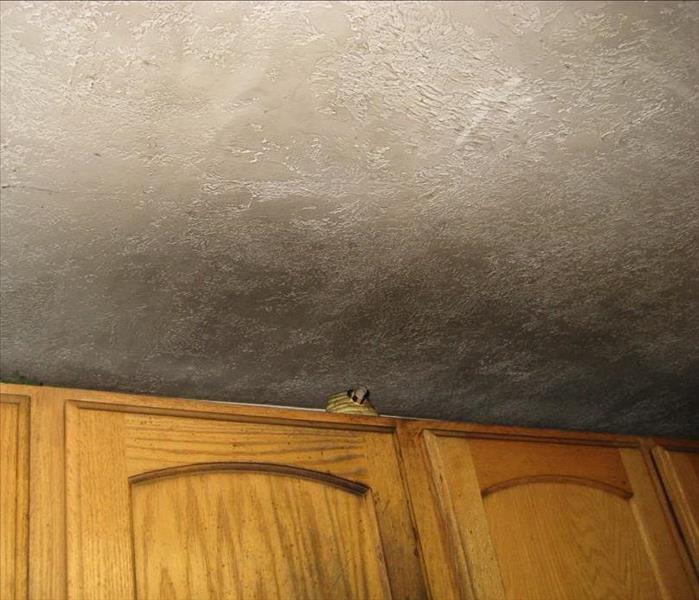
Fire damage in Biloxi, Ocean Springs, and Gulfport can be a devastating event. Once your property has been impacted by a fire, hiring a high-quality fire damage restoration service is important. To ensure that you can get a professional service you need and deserve, browse through these tips and tricks outlined in this quick reference guide courtesy of SERVPRO.
Request a Referral From Your Insurance Company. The best way to find the ideal fire damage restoration company is through a referral. Who has dealt with these restoration companies more than your insurance company? Ask your agent or adjuster for a referral and chances are SERVPRO will be at the top of the list. Past experiences of cooperation and coordination of the fire damage restoration process make the project easier to expediently complete while keeping costs down. If a claim is involved, we can provide an estimate complying with insurance industry guidelines. This step is also advantageous because it ensures that SERVPRO and your insurance provider can work together throughout the remediation process. Less stress for you through a difficult time.
Ensure That The Fire Damage Restoration Company Can Handle Your Needs. After a house fire, water pooling from the extinguishing efforts could be causing secondary structural and furnishings damage in your Ft. Lauderdale home. Another step you should implement to find the right restoration services is determining whether the company can handle your specific needs. Standing water must be extracted immediately before, during, and after the assessment of damages has been provided to you, if the level of damage is extensive
• HVAC system cleaning: removal of smoke odor and soot and moisture
• Debris removal: burnt or water-logged. Cleaning of items, and possessions on location or at our headquarters. Our IICRC-certified technicians will provide you the high quality fire damage restoration services you require with empathy.
• Extensive drying: water extraction by pumps, and wet-vacs, air movers, and dehumidifiers finish the drying, then checked with meters, final documentation that the structure is dry. Help prevent mold growth.
• Structural rebuild: restore fire damaged building materials when possible, replace when necessary. Keeps the cost and repair time down.
Once the fire in your home has been extinguished, get together with your insurance adjuster and SERVPRO of Biloxi. We will take the stressful burden from you and provide fair, expedient, and cost-effective results. Our goal is to get you back home as soon as possible. We will also have a final walk-through with you to ensure your complete satisfaction with your restored Biloxi, Ocean Springs, Gulfport, and Pascagoula fire damaged home.
Locally Owned, with National Resources
We are proud to be an active member of these gulf coast communities. SERVPRO of Biloxi is locally owned and operated so we’re already nearby and ready to help residents with any-sized smoke and fire damage emergencies. Call us 24/7 for help. (228) 396-3965
Structure Cleaning After Fire Damage
6/17/2022 (Permalink)
When a fire happens, it causes soot. (Soot: A black, powdery, or flaky substance consisting largely of amorphous carbon, produced by the incomplete burning of organic matter.) If the HVAC system is on during a fire, it can spread the soot in the house by circulating the air throughout.
While it may take some time to remediate a fire, it is important that the soot is wiped down with appropriate cleaning agents and in a timely manner. If soot is left on any surface too long, it can break down that surface and cause damage to walls, furniture, and other surfaces.
SERVPRO of Biloxi, Ocean Springs, Gulfport, and Pascagoula can do Fire restoration.
This picture shows just one wipe down of a wall in the home where we did a structure clean after a fire. Some surfaces can take longer to clean, depending on the texture of the wall and how much soot there is on the surface.
Accidents Happen, Call US
6/14/2022 (Permalink)
Perhaps you are hosting a gathering in your home and leave the stove unattended to greet your guests only to come back to a kitchen engulfed in flames. Alternatively, a scented candle is left too close to your window treatments, and they catch on fire. The reality is that accidents happen and as homeowners, we are always vulnerable to being a victim.
Mitigating the losses in your home due to fire is mostly dependent on how quickly you reach out to a professional team to restore your home. Thankfully, our SERVPRO rapid response team is available 24/7 and can begin the assessment of damage shortly after receiving your call. Our formal training lets us gauge both the nature of the fire and the type of residue it left behind, allowing us to tailor our approach specifically to your needs.
Aside from the apparent damage smoke causes, there is also the lingering smell that can permeate your whole home. When our SERVPRO crew works to eliminate that foul smell we take into account just how porous each surface is and how the soot got there. In our process, we attempt to follow the same route the smoke took to saturate your belongings with odor-fighting solutions. This specific odor-fighting approach makes our services efficient and effective, returning your home to you as soon as possible.
An accidental fire in your home should not turn into a tragedy. SERVPRO holds the solutions to your specific problems, and we are quick to implement it. Call us at (228) 396-3965 and let us leave your home “Like it never even happened.”
Before you cook up a disaster, know how to put out potential fires.
6/10/2022 (Permalink)
How to prevent a kitchen fire
Stay nearby, this sounds unnecessary to say but unattended cooking was by far the leading contributing factor in fires between 2007 -20011.
According to the NFPA, unattended cooking is the leading cause of kitchen fires. Don’t leave your boiling spaghetti alone!
Place your products elsewhere
Keep your towels, paper towels and pot holders away from open flames because they pose a fire hazard.
Have the proper tools
Besides a lid and a fire extinguisher, ensure smoke detectors are working properly test them biannually.
What to use to put out kitchen fire
Cookware lid
When cooking on a stove top, always keep a lid nearby that fits the pot or pan you’re using. That way, if the food catches fire, you can put the lid on to quickly smother the flames.
Salt
Use a handful of salt, which cuts off the oxygen supply and smothers the fire.
Baking soda
Like salt, baking soda works to put out grease fires. For example, if grease falls to the bottom of the oven and catches fire, covering it with baking soda and it should put it out.
Fire extinguisher
If you don’t have access to salt, baking soda or water, use a fire extinguisher. Keep one handy in your kitchen in case of emergencies, Reith and Sexton suggest. Know where it is and how to use it.
Water
If your towel or pot holder catches fire, put it in the kitchen sink and douse it with water. Never use water to put out a grease fire. Pouring water onto a grease fire will make a bad situation worse. This can cause burning oil to splatter or even bigger flames to form. Burning drops of grease or oil can spread quickly out of control.
How to put out a kitchen fire
Smother the flames Fire needs oxygen to thrive. Thwart flames by cutting off their supply.
Turn off the heat
Remember to turn the burner off when a fire occurs. If the fire starts in an appliance such as your oven or microwave, immediately cut the power source and close the door. If you catch it early enough, there won’t be enough oxygen to keep the fire going, and the fire will die.
Evacuate
Don’t be a hero. If a fire gets out of hand, you should get out of there. According to the National Fire Protection Association, 55 percent of non-fatal home cooking fire injuries occurred when the victims tried fighting the fire themselves.
Call 911
Emergency service providers undergo many hours of training to handle these situations, so avoid putting yourself at unnecessary risk. Let professionals who know the risks and dangers handle it. According to the city website for the FY 2015 Winston Salem has responded to 819 fires.
Be sure to stay safe and for more information and tips on what to and not to do see our website SERVPRO Biloxi, Ocean Springs, & Gulfport. After the fire department leaves there will be damage, call SERVPRO of Biloxi, Ocean Springs, & Gulfport to help make it “Like it never even happened.” It’s best to call us directly 228-396-3965.
Gulfport, MS Fire Damage Restoration including Smoke and Soot Cleanup|
6/3/2022 (Permalink)
Gulfport, MS Fire Damage Restoration including Smoke and Soot Cleanup| SERVPRO of Biloxi / Ocean Springs / Gulfport
Our Fire Damage Restoration Services
Every fire damage situation is a little different and requires a unique solution, but the general process stays the same. When various materials burn, the soot they create differs greatly and requires a specific cleaning procedure. The steps listed below illustrate our process for the “typical” fire damage restoration. Learn more about our fire damage restoration process.
- Emergency Contact
- Inspection and Fire Damage Assessment
- Immediate Board-Up and Roof Tarp Service (if needed)
- Water Removal and Drying (if water damage is present)
- Removal of Smoke and Soot from All Surfaces
- Cleaning and Repair
- Restoration
We are Always Here to Help! 228-396-3965
Gulfport, MS Fire Damage Restoration including Smoke and Soot Cleanup|
6/3/2022 (Permalink)
Gulfport, MS Fire Damage Restoration including Smoke and Soot Cleanup| SERVPRO of Biloxi / Ocean Springs / Gulfport
Our Fire Damage Restoration Services
Every fire damage situation is a little different and requires a unique solution, but the general process stays the same. When various materials burn, the soot they create differs greatly and requires a specific cleaning procedure. The steps listed below illustrate our process for the “typical” fire damage restoration. Learn more about our fire damage restoration process.
- Emergency Contact
- Inspection and Fire Damage Assessment
- Immediate Board-Up and Roof Tarp Service (if needed)
- Water Removal and Drying (if water damage is present)
- Removal of Smoke and Soot from All Surfaces
- Cleaning and Repair
- Restoration
We are Always Here to Help! 228-396-3965
How To Deal With The Aftermath Of A Fire
5/17/2022 (Permalink)
More Problems Caused By Fire
After a fire is put out, property owners expect the need to replace any items that have burned. What many do not consider is the items that were not destroyed by the fire, but affected by the smoke. Smoke, the byproduct of materials burning, creates a lasting odor that is difficult to remove.
As smoke rises, it can seep into your walls, ceiling, and roof. Once the smoke fills your your attic or crawl space, it increases the likelihood of moving into your HVAC.
How SERVPRO Restores Your Property After A Fire
SERVPRO of Biloxi, Ocean Springs, Gulfport, and Pascagoula is trained and has years of experience in removing and replacing insulation before your HVAC is affected. We get right to the root of the issue when dealing with smoke and soot. When we are on the job, we ensure that not only will your property be restored, but it is handled quickly before further damage ensues. Your job is to rest assured your odor problems are being taken of, and our job is to make it "Like it never even happened."
Fire Safety Tips for Spring
5/13/2022 (Permalink)
Many of us anticipate spring each year. Something about it just feels fresh and new, and it reminds us of new life and lifts our spirits after the long, cold winter.
There are also lots of social events during the warmer months—family reunions, celebrations and really just any excuse to break out the smoker or grill. But this also unfortunately means a rise in the number of accidental fires.
In fact, spring sees more daily fires on average than any other time of year. But you’re responsible, so of course you want to know what you can do to prevent these kinds of damaging events.
The grill. Grilling is the most common culprit of spring fires, and that makes sense. By its nature, cooking with a combination of flames, grease and sometimes gas presents a risk of combustion. So make sure the grill is well-connected, working properly, stable, and cleaned often and well. Almost 20% of grill fires are due to poor cleaning.
The fire pit. The fire pit is a lovely place to sit and chat with friends as the evening cools, as long as you can do it safely. A bucket of nearby water is a must, both as an emergency tool and a way to safely put the fire out. Do this slowly rather than dumping water on the fire, which is more likely to send dangerous embers flying. Make sure no unattended children are near the pit, and don’t use leaves or pine needles to fuel the fire.
Chimneys and dryer vents. While chimney cleaning isn’t a must this time of year, it’s the most pleasant time to take care of it, and it should be done annually to avoid dangerous buildup. And also check your dryer’s connections, hoses and vent pipe to make sure no backed-up lint is inside.
Your local SERVPRO technicians are on hand 24⁄7 for emergencies. If you encounter fire damage at your home or business, no matter the cause, we will be there faster and have it cleaned up sooner. Call or click today and experience the SERVPRO difference.
Pascagoula's Fire Restoration Resource
5/11/2022 (Permalink)
House fires can happen at any point during the year. But did you know that they’re more common during the winter months?
There are various reasons for this, ranging from home chefs whipping up larger holiday meals to space heater accidents.
Fires involving Christmas trees are one of the leading causes of fire damage during the holiday season. But home heating malfunctions and kitchen accidents can also cause issues for homeowners.
Our Team Is Here to Help
While no one likes to think about the aftermath of a house fire, it’s a reality for millions of Americans every year. If a fire impacts your home, we want to help you repair the damage and move forward with your life.
Here’s why we are the trusted partner for fire damage remediation in Biloxi, Gulfport and Ocean Springs:
We can help with all the restoration steps. Fire damage includes things you may not think about—like smoke damage, water damage and issues with odors in furniture upholstery. Our team can work through restoration on whatever you need us to do.
Our team believes in restoration. We have the experience necessary to ensure you can get the help you need by working to save you money on both repairs and your insurance. We look for ways to make the restoration process as painless as possible and to restore as many of your heirlooms as we can. We know some things are irreplaceable.
We’re available at any time. Fires don’t happen on anyone’s schedule. And getting started with the restoration process fast is vital to putting your home back the way it was before a fire. We know that time matters when dealing with a home restoration. Our team is available 24⁄7 when you need emergency help.
We are proudly locally owned and operated. SERVPRO is a national company, but the owner of our location is a member of the community here. We can use the leading-edge resources, equipment and techniques available to a large national company at your home. But we live and work here and want to serve our many neighbors.
If you have fire damage in your home due to a kitchen, heating or other fire, you can count on us for restoration assistance. Our team is always ready to meet your needs and help you restore your home. Contact us at any time to learn more about our restoration services.
Fire Facts You Did Not Know
5/9/2022 (Permalink)
Fire Damage can Occur in 30 Seconds
A combustion or burning in which substances combine chemically with oxygen from the air and typically give out bright light, heat, and smoke is known as a fire. Fires can occur in homes and outdoors, due to many causes.
Some interesting facts about fire:
1. There is a house fire every ten seconds in the United States.
2. House fires can spread in as little as thirty seconds.
3. Create and practice a fire escape plan.
4. Cooking is the leading cause of house fires
5. More then 15,000 fires a year are started by cloths dryers
6. 21% of fires are caused by Arson
It is very important that if there is ever a fire GET OUT, STAY OUT, and CALL FOR HELP! Fires can cause severe damage, it is important to practice safe steps when preparing for a potential fire.
If you ever are presented with fire damage, call SERVPRO of Biloxi, Ocean Springs, and Gulfport at 228-396-3965
Tips to Keep your Pet Safe in a Fire
5/5/2022 (Permalink)
An Evacuation plan that leaves time for pets!
Fires can happen to anyone anywhere! When an unexpected fire emergency occur, it is beneficial to have a plan in place! Everyone, including pets needs to be evacuated and to know where to meet. Make sure your meeting place is a safe distance from the home to avoid smoke inhalation. While the main focus is to get your family out as quickly as possible, having an evacuation plan and practicing it can give you time to get your pets out too. Here are a few steps to take to ensure everyone, even your pets safety:
Practice Makes Perfect:
Don't be caught confused about what steps to take in case of fire. In the heat of the moment, it is almost impossible to think of everything you need to do. This is why practicing the actual plan is important. This will help you to leave time to pick up your pets and take them to the designated meeting spot.
Where Do Your Pets Go:
Take note of the places your pets go when they are scared. Does your dog hide behind the sofa when a thunderstorm strikes? Does your cat hide in the laundry room when something startles her? When a fire starts, you do not want to spend a lot of time looking for your animals. Create a checklist of areas to look in case of an emergency. Keep your list on the fridge or pinned to a bulletin board for easy access. Being prepared with this checklist can help get you and your pets out as quickly as possible.
Keep Leashes by the Exit:
Sometimes when animals are frightened they will run away. When you are evacuating, it is important to keep your pets on a leash so that as firetrucks and other first responders approach, everyone is safe. You will be able to find your leashes more easily if they are kept by your main exit on a hook.
SERVPRO of Biloxi, Ocean Springs, and Gulfport are here to help! 228-396-3964
Do You Know What a Fire Web Is?
5/3/2022 (Permalink)
Most people do not know that when a fire happens it can cause webs in your home that look like cobwebs. The photo shows what we call smoke webs. You can google this and it will give you the reason behind it, but let us explain it to you: it’s when plastics burn, the smoke carries a stronger charge than when wood, cotton or paper burns. Sometimes, this causes smoke residue to form the smoke webs. Depending on what exactly the webs are made of, they can be sticky, smeary, and more difficult to clean.
Highly Trained Restoration Specialists
Our SERVPRO Professionals here at SERVPRO of Biloxi, Ocean Springs, & Gulfport are highly trained in property restoration. From initial and ongoing training at SERVPRO's Corporate Training Facility to regular IICRC industry certifications, our Professionals are equipped with the knowledge to restore your property. The SERVPRO training program includes the follow:
- IICRC Training
- Employee Certification Training
- Initial Franchise Training
- e-Learnings
- Continuing Education Classes
SERVPRO Is Always Here To Help After A Fire
4/26/2022 (Permalink)
If you have experienced a house fire, you understand exactly how disheartening it can be. Even for fires that are put out right away, smoke, soot and flames can still cause significant damages in a short span of time and be a traumatizing experience.
Though the aftermath is difficult to navigate, we have assembled some tips for helping you navigate the aftermath of a fire so you can make sure you are handling it as efficiently as possible.
Tips to Help You Navigate the Aftermath of a Fire
Prepare yourself for what to expect. While we have likely all seen photos or videos of fire damage, seeing it firsthand in your own home is always different. To allow smoke to escape, firefighters often break glass and doors, and because of how smoke travels, soot may be on items that were nowhere near the flames. If the fire was extinguished with water, there may also be moisture damage to items nearby as well.
Wait to enter your home. Though things may appear to not be damaged enough to make your home a hazard, never enter without first checking with officials to determine that everything is safe. A fire can undermine a home’s structural elements via invisible damage, and a second combustion may even be possible depending on the source of the fire. Make sure to always wait for the OK before reentering your home.
Contact your insurance company. Once you can reenter the home and assess the damage, you should contact your insurance provider to let them know what happened and learn about coverage in the event of a fire. It is important to not make any changes to the home before you contact them in order to not unwittingly do something to sabotage your claim.
Document the damages. To help you prepare for your insurance claim before you begin cleaning up, take a complete inventory of what has been damaged and be sure to snap clear photographs. This will not only help your claim, but it will also help you keep track of what to replace around the house.
Contact your restoration company. Working with the right restoration company can really make all the difference during your recovery period after a fire. Fires take a significant emotional toll on the entire family, so working with a company that you trust is a great way to gain peace of mind throughout the recovery process.
If your home is damaged in a house fire, you can count on us to help you. Get in touch at any hour for a quick response.
Get Into the Habit of Grill Safety
4/21/2022 (Permalink)
For most people during the summer months, the grill is likely the source of the majority of your meals—and for good reason! There is nothing better than grilling your dinner and enjoying a family meal outside, but because it is such a regular activity, it can be one where people forget to take the proper safety precautions if they are not a habit.
Around 5,700 grill fires occur annually as reported by the U.S. Fire Administration, and they can be quite a costly occurrence to your patio and even to your home. Getting in the habit of always practicing fire safety when grilling is the best thing you can do to protect and enjoy yourself.
Get Into the Habit of Grilling Safely
Create a safe zone around your grill. Though walking out your back door and being at your grill sounds ideal, it can lead to a serious issue if a fire were to start. A grill flare-up can span several feet, so if your grill is near wood deck railing, vinyl siding or anything else flammable, it can start a fire immediately. Creating a safe zone of at least three feet around your grill at all times is recommended.
Clean your grill grates often. Food particles can build up on the grill over time, creating a prime opportunity for a grease fire to break out on your grates. It is important to get into good cleaning habits so food does not have the opportunity to stay stuck on the grill for long—just giving the grill a quick brush after each use should suffice.
Never leave the grill unattended. Though grills may feel safer to walk away from due to their lid, even with the lid closed, they can start a fire in an instant. Treat the grill just as you would your kitchen stove or a bonfire and never walk away from it once it is lit. You should also put a fire extinguisher within arm’s reach just in case a flame does begin to get out of hand.
Inspect the grill regularly. If you are using charcoal to grill, you will not have to worry about propane tanks and lines. However, on a gas grill, you should check your system carefully every time you use it. Leaks around your propane tank or worn hoses can become a huge fire hazard once a flame is introduced, so a quick inspection is advised.
If you have a grill fire do damage to your home, we are here to help. You can call us any time, day or night, to have a quick response from our restoration experts.
Stop, Drop and Call SERVPRO
4/20/2022 (Permalink)
When a fire happens, it causes soot. (Soot: A black, powdery, or flaky substance consisting largely of amorphous carbon, produced by the incomplete burning of organic matter.) If the HVAC system is on during a fire, it can spread the soot in the house by circulating the air throughout.
While it may take some time to remediate a fire, it is important that the soot is wiped down with appropriate cleaning agents and in a timely manner. If soot is left on any surface too long, it can break down that surface and cause damage to walls, furniture, and other surfaces.
SERVPRO of Biloxi, Ocean Springs, Gulfport, and Pascagoula can do Fire restoration.
This picture shows just one wipe down of a wall in the home where we did a structure clean after a fire. Some surfaces can take longer to clean, depending on the texture of the wall and how much soot there is on the surface.
Working Around the Clock | SERVPRO® of Pascagoula
4/5/2022 (Permalink)
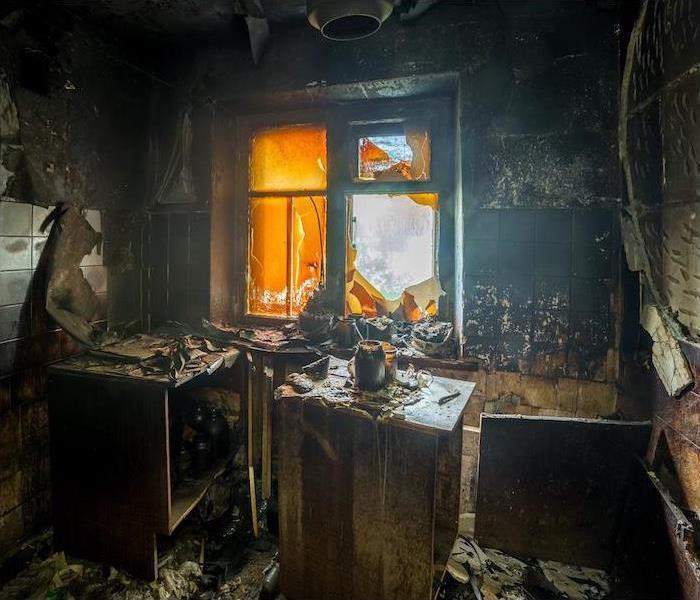 If a fire issue pops up during the holidays, remember the trusted leader in the recovery industry, SERVPRO of Pascagoula.
If a fire issue pops up during the holidays, remember the trusted leader in the recovery industry, SERVPRO of Pascagoula.
With life so busy these days, most people appreciate a notice of some kind before you drop by their home. Most people want to ensure their homes are tidied up and ready for company.
However, disasters or accidents don’t typically pick up the phone and let you know when they’re coming! They show up when it’s convenient for them, not you. And of course, it’s not in your preferred time frame.
So when these things happen to your home or business, you need to be able to call someone who can help you restore your place in a hurry. Here’s why:
After a fire. The flames of a fire can destroy a lot in very little time, but there are many other side effects that can destroy your things as well. Things like soot or smoke that can bake into the fabrics or structure of your home or business.
And these things don’t go away on their own, it’s something that will take professionals to come in and remove it. The faster they act, the less intensive the removal and restoration process will be.
After water damage. Once you’ve extinguished the flames, you realize your place has now been drenched in water! And water damage, no matter the cause, has to be dealt with immediately.
It only takes 48 hours before it can turn into a much bigger problem for you—mold. Sometimes it doesn’t even take that long, which is why quick action is necessary.
And if that’s not enough to make you immediately want to clean up after an accident or disaster, you should know that you can also run the risk of adding to the damage.
Because we deal with home and business restoration regularly, we know that you don’t have time to wait! We are here to provide you with quick and quality service. And we will not stop until you are satisfied.
When you need help after a home or business disaster, fast service is a priority, and there’s nobody faster or more prepared than SERVPRO. Call us anytime to take advantage of our 24-hour emergency service.
What Is a Fire Tetrahedron & How Does It Work?
3/19/2022 (Permalink)
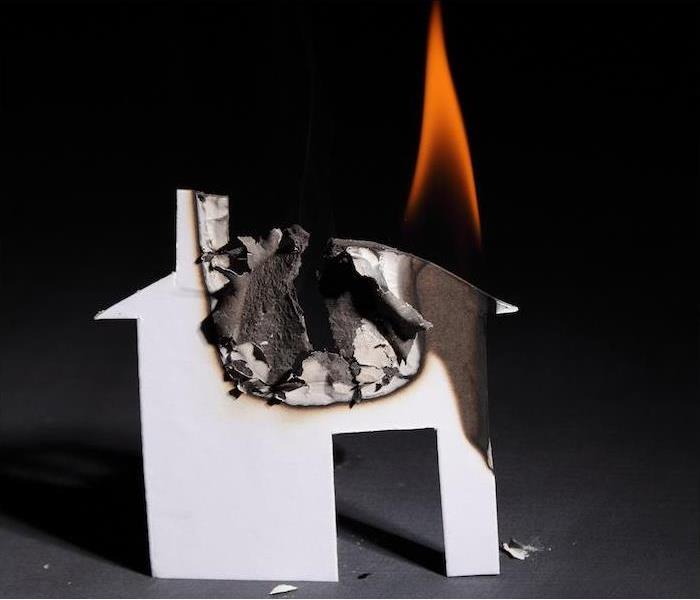 If your home or business has any damage, SERVPRO of Biloxi/Ocean Springs/Gulfport is ready around the clock to help you recover.
If your home or business has any damage, SERVPRO of Biloxi/Ocean Springs/Gulfport is ready around the clock to help you recover.
Do you remember when you were in school and discussed the tetrahedron? If you can’t remember back that far, in short, a tetrahedron is a three-dimensional, triangular shape with four equal sides.
So, now that we understand what a tetrahedron is, let’s see what a fire tetrahedron is. There are four components needed for a fire to start—aka four sides—and without these elements working together, a fire can’t start.
The 4 Things a Fire Needs to Live
Fuel. In order for a fire to start or continue, it has to have something to burn. Things like woods, plastics and fibers are all perfect fuel sources for fire.
Heat. The amount of necessary heat will vary from substance to substance, but every object has a threshold at which point it will ignite.
Oxygen. When fire reacts with oxygen, it produces an expanding series of chemical reactions. Oxygen feeds the fire so that it can continue to grow and burn.
Chemical Chain Reaction. The continual cycle and feeding of heat, fuel and oxygen combine and produce a chain reaction. This chemical reaction keeps the fire going until one of the elements is removed.
The 4 Ways to Stop a Fire
Cool it. This is likely the first thing you think of. Buckets of water and hoses often offer the solution. Cooling the material to a thermal balance means the rate at which heat is generated can’t compete with the rate at which the heat is lost.
Smother it. When a fire doesn’t have access to oxygen, it will quickly die out. The process of smothering a fire is to deprive it of the oxygen it needs to continue. This is the principle behind the “stop, drop and roll” method of putting out a fire on clothing.
Starve it. A fire will burn until it runs out of adequate fuel. Things like grass, wood or other materials are the fueling sources. The best thing you can do is remove these fuel sources as the fire is trying to consume them.
Interrupt the chain reaction. Chemical agents such as halon can quickly put a stop to a fire by chemically disrupting the reaction that multiplies. Halon is a very effective chemical, but it produces an elevated potential for ozone depletion, making it an environmental threat. Because of this, the production of halon has been stopped.
If the fire tetrahedron makes a wreck of your home or business, we’re ready around the clock to help you recover. Contact SERVPRO anytime for fast, thorough cleanup and recovery after a fire.
Fire Safety for Spring & Summer
6/8/2021 (Permalink)
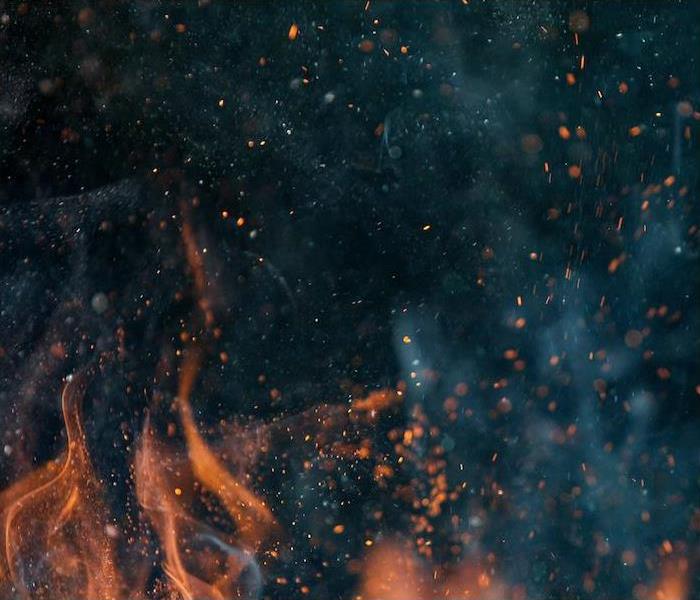 Restoring fire and smoke damage is one of our specialties. Contact SERVPRO of Biloxi/Ocean Springs/Gulfport to learn more.
Restoring fire and smoke damage is one of our specialties. Contact SERVPRO of Biloxi/Ocean Springs/Gulfport to learn more.
Many of us anticipate spring each year. Something about it just feels fresh and new, and it reminds us of new life and lifts our spirits after the long, cold winter.
There are also lots of social events during the warmer months—family reunions, celebrations and really just any excuse to break out the smoker or grill. But this also unfortunately means a rise in the number of accidental fires.
In fact, spring sees more daily fires on average than any other time of year. But you’re responsible, so of course you want to know what you can do to prevent these kinds of damaging events.
The grill. Grilling is the most common culprit of spring fires, and that makes sense. By its nature, cooking with a combination of flames, grease and sometimes gas presents a risk of combustion. So make sure the grill is well-connected, working properly, stable, and cleaned often and well. Almost 20% of grill fires are due to poor cleaning.
The fire pit. The fire pit is a lovely place to sit and chat with friends as the evening cools, as long as you can do it safely. A bucket of nearby water is a must, both as an emergency tool and a way to safely put the fire out. Do this slowly rather than dumping water on the fire, which is more likely to send dangerous embers flying. Make sure no unattended children are near the pit, and don’t use leaves or pine needles to fuel the fire.
Chimneys and dryer vents. While chimney cleaning isn’t a must this time of year, it’s the most pleasant time to take care of it, and it should be done annually to avoid dangerous buildup. And also check your dryer’s connections, hoses and vent pipe to make sure no backed-up lint is inside.
Your local SERVPRO technicians are on hand 24⁄7 for emergencies. If you encounter fire damage at your home or business, no matter the cause, we will be there faster and have it cleaned up sooner. Call or click today and experience the SERVPRO difference.
Tips to Increase your Household Fire Safety
2/2/2021 (Permalink)
Having a fire break out in your home is a terrifying experience, and something no one ever wants to go through in their own home. The rapid spreading of fires is part of what makes them extremely dangerous—a small flame can often spread into a full-fledged fire in under a minute. However, through practicing smart fire safety, you can significantly improve your chances of never having to worry about a house fire.
Prevention is the best tactic to reduce your chances of experiencing a house fire. Implementing smart fire safety habits can prevent a fire from ever breaking out in the first place. Here are some ways to give your fire safety a boost.
How Can I Give My Home’s Fire Safety a Boost?
Check your smoke detectors. Smoke detectors are the top safety measure for any home, and making sure that yours are operational is extremely important. Get in the habit of testing your smoke detectors on a monthly basis using their test button, and change the batteries whenever the unit begins to chirp.
Create a fire escape plan. In case the fire alarms sound, knowing how to escape the home quickly is so important. Experts recommend being able to get out of the house in two minutes or less to avoid smoke exposure. For this reason, it is smart to have a fire escape plan, ensure every room has at least two exits and create a meeting spot with your family for when you get out of the home.
Limit your fire risks. Overall, practicing good habits around the house can go a long way in fire prevention. Simple things such as cleaning out your dryer’s lint tray regularly, avoiding running extension cords under rugs and always supervising open flames can have a big impact in your overall fire risk in the home.
Keep a fire extinguisher handy. Though there are many situations where it is not safe to attempt to use a fire extinguisher, in some cases, you may be able to extinguish small flames before they become a huge house fire. It is smart to always keep an operational fire extinguisher handy just in case the need to use it arises.
If your home is damaged by a house fire, we are here to help. Our expert fire restoration technicians are here 24⁄7 to spring into action as soon as you call. Contact us at any hour to report your damage and receive a quick response.
Practicing Grill Safety
2/2/2021 (Permalink)
For most people during the summer months, the grill is likely the source of the majority of your meals—and for good reason! There is nothing better than grilling your dinner and enjoying a family meal outside, but because it is such a regular activity, it can be one where people forget to take the proper safety precautions if they are not a habit.
Around 5,700 grill fires occur annually as reported by the U.S. Fire Administration, and they can be quite a costly occurrence to your patio and even to your home. Getting in the habit of always practicing fire safety when grilling is the best thing you can do to protect and enjoy yourself.
Get Into the Habit of Grilling Safely
Create a safe zone around your grill. Though walking out your back door and being at your grill sounds ideal, it can lead to a serious issue if a fire were to start. A grill flare-up can span several feet, so if your grill is near wood deck railing, vinyl siding or anything else flammable, it can start a fire immediately. Creating a safe zone of at least three feet around your grill at all times is recommended.
Clean your grill grates often. Food particles can build up on the grill over time, creating a prime opportunity for a grease fire to break out on your grates. It is important to get into good cleaning habits so food does not have the opportunity to stay stuck on the grill for long—just giving the grill a quick brush after each use should suffice.
Never leave the grill unattended. Though grills may feel safer to walk away from due to their lid, even with the lid closed, they can start a fire in an instant. Treat the grill just as you would your kitchen stove or a bonfire and never walk away from it once it is lit. You should also put a fire extinguisher within arm’s reach just in case a flame does begin to get out of hand.
Inspect the grill regularly. If you are using charcoal to grill, you will not have to worry about propane tanks and lines. However, on a gas grill, you should check your system carefully every time you use it. Leaks around your propane tank or worn hoses can become a huge fire hazard once a flame is introduced, so a quick inspection is advised.
If you have a grill fire do damage to your home, we are here to help. You can call us any time, day or night, to have a quick response from our restoration experts.
Fire Tips for your Business
2/2/2021 (Permalink)
Although an emergency escape plan is not required for all businesses under the Occupational Safety and Health Administration (OSHA), it recommends your building have an emergency action plan to protect yourself, employees, and your business during an emergency situation. OSHA suggests the following steps when developing such a plan.
Organize emergency preparedness procedures and share them with your employees.
Once a plan is developed, post evacuation procedures, including routes and exits, where they are easily accessible to all employees. ensure that all exits are marked and will lit, wide enough to accommodate the number of evacuating personnel, and unobstructed and clear of debris at all times.
Conduct office evacuation exercises and drills. Designate a safe spot outside of the facility where employees can regroup, recover, and conduct a head count. Once completed evaluate how well the plan worked. you may need to make improvements.
Be sure to talk with your employees on best and safest practices with evacuating
Practicing Safety When Burning Candles This Winter | SERVPRO® of Pascagoula
12/16/2020 (Permalink)

While many of us enjoy candles all throughout the year, between holiday decorations and a general ambiance of coziness, the winter months are when candle usage hits its peak for most. The National Fire Protection Association has found that Christmas Day is the day of the year that sees the most candle-related fire incidents, as many people use them in their decorations, which can lead to hazards. Fortunately, candles can still be enjoyed safely, as long as you follow some helpful guidelines for fire protection. As with any open flame, candles present a risk that can be effectively managed if you are careful and diligent about fire safety. Safety Tips for Using Candles This Winter Always Stay Alert When Burning Candles As with any open flame, the top safety tip is to always stay alert and make sure to not become distracted or let your guard down when it is lit. It has been found that 11% of candle-related fires were due to someone falling asleep while they were burning, so be sure you are always awake, alert and in the room before lighting a candle in the home. Keep Candles Clear of Combustibles Candles are often small, contained flames, but if they are placed too near anything that is combustible, they can quickly spread and cause chaos. Always place candles away from the clutter on tabletops, and ensure there are no drapes, fabric, paper or other combustible materials that the flame could potentially travel to. Be Safe During Power Outages Many fires that are caused because of candles have to do with power outages, but candles are not a good source of light if the electricity cuts out. Keep plenty of flashlights, lanterns and batteries in the home so you do not have to rely on candles if your lights are out for any period of time. Use Sturdy Candle Holders If you are using pillar candles or another type that must be set into a candle holder, be sure that it is a sturdy piece that will not easily tip over. Just in case, do not put these types of candles near anything that they could catch on fire if they were to tip. If you experience a house fire, we are here to help. You can get in touch with us no matter the hour to learn more or to report damages. Contact us today.
Fire Safety Tips for Wintertime
11/11/2020 (Permalink)
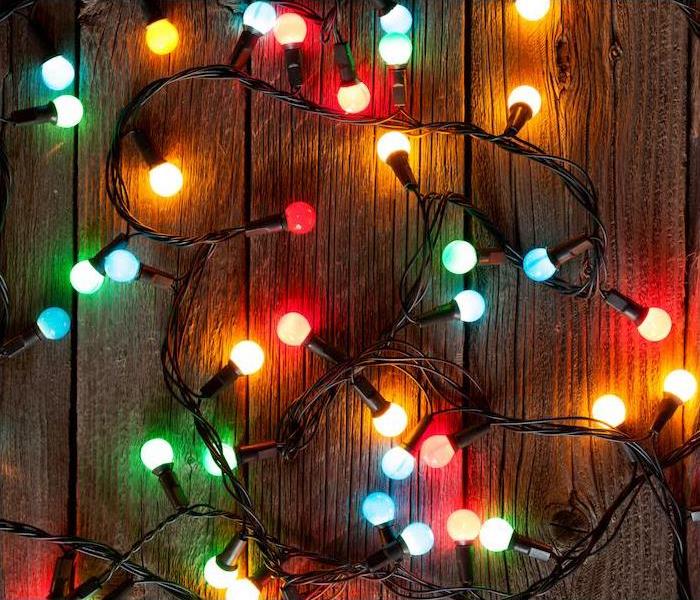 Make sure your fire risk is low during the holidays. If you experience any damage, SERVPRO of Pascagoula will be here to help.
Make sure your fire risk is low during the holidays. If you experience any damage, SERVPRO of Pascagoula will be here to help.
The holidays will be here before we know it, and as we prepare with recipes and shopping for gifts, it is also vital to make sure we are remembering preparedness for house fires. The Red Cross has found that winter is the top time for house fires, and many of our favorite winter activities give fires ample opportunity to occur.
As you go about our holiday season preparations, be sure that fire safety remains top of mind. Cooking, heating and decorating are all associated with this time of year, but they also give fires plenty of opportunities to spark.
Practicing Fire Safety This Holiday Season
Keep safe when cooking. Cooking is consistently one of the top causes of fires in the home, and because more people tend to cook large meals and participate in holiday baking, these types of fires often increase during the winter. Every time you cook, be certain to keep flammable objects away from the stove, make sure a fire extinguisher is handy and keep at least three feet around the stove clear of all other people, children and pets.
Heat the house with proper precautions. Many people make use of space heaters and fireplaces to supplement their home’s heating system, but it is important that you always use these tools with caution. Space heaters should always cut off if they get too hot or tip over, and should never be used on carpet or near flammable items. If you use a fireplace, be sure to get your chimney inspected every year and never allow a fire to burn unattended.
Decorate with care. Winter lights, Christmas trees and other decorations are fun, but they do present an electrical hazard for homes. Around 25% of Christmas tree fires are a result of electrical issues, which can arise from overloading outlets and power strips, using decorations with frayed wires or not unplugging everything before leaving or going to bed.
If you have damage due to a house fire, you can depend on us to help. Contact us 24 hours a day to report damage and receive a quick response from our certified restoration technicians. Get in touch today.
How to Establish a Fire Drill Procedure for Your Business | SERVPRO® of Pascagoula
6/25/2020 (Permalink)
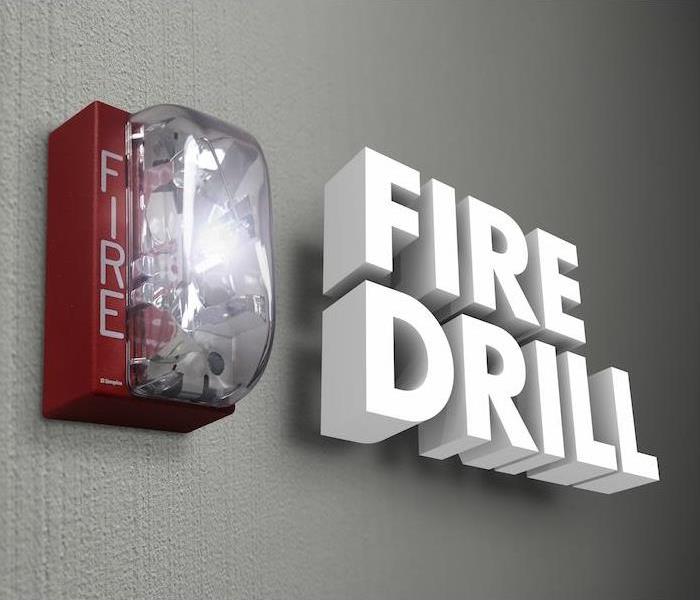 If your business experiences any fire damage, you can count on us. SERVPRO of Pascagoula specializes in commercial fire restoration
If your business experiences any fire damage, you can count on us. SERVPRO of Pascagoula specializes in commercial fire restoration
Being prepared for changes is part of owning your own business, but have you considered how a fire could change your plans? The risk of a commercial fire is huge for businesses, and if you have employees who work on-site, it is important to make sure they are prepared for the possibility as well.
Establishing a fire drill procedure is a great way to keep everyone safe and informed regarding the steps to take if a fire breaks out. Here’s how to do it:
Planning a Fire Drill Schedule for Your Business
Consult with your local fire officials. Talking with local fire officials is a great jumping-off point for implementing any type of fire safety plan. They can talk you through the specifics of your layout so you can effectively plan evacuation routes and they can also discuss your overall fire risk so you can increase your fire safety throughout the building.
Communicate and mark fire evacuation routes. Once you have your evacuation routes set, mark them clearly with signs and communicate with staff on what this means. Involving your employees in the fire safety process will make everyone feel safer and prepare them ahead of time for when you start scheduling regular drills.
Have fire drills frequently. The first moments of a fire can be a scary time, but they are also the most crucial to getting to safety. Fires can spread rapidly, which is why reducing panic and getting everyone out of the building quickly is so important. Regular fire drills can help with this, as everyone will know exactly what to do and where to go from their rehearsals.
Run different fire scenarios. No two fires are identical, so your fire drills should not be identical either. Make sure to practice a variety of scenarios so your staff is prepared for anything—experiment by having the fake fire “originate” in different places or blocking some fire exits to better emulate a real-world scenario so your staff can be safe no matter what.
If your business has experienced fire damage, you can count on us. We specialize in commercial fire restoration and will be here for you at any hour—contact us today.
Handling Fire Damage to Your Home
6/16/2020 (Permalink)
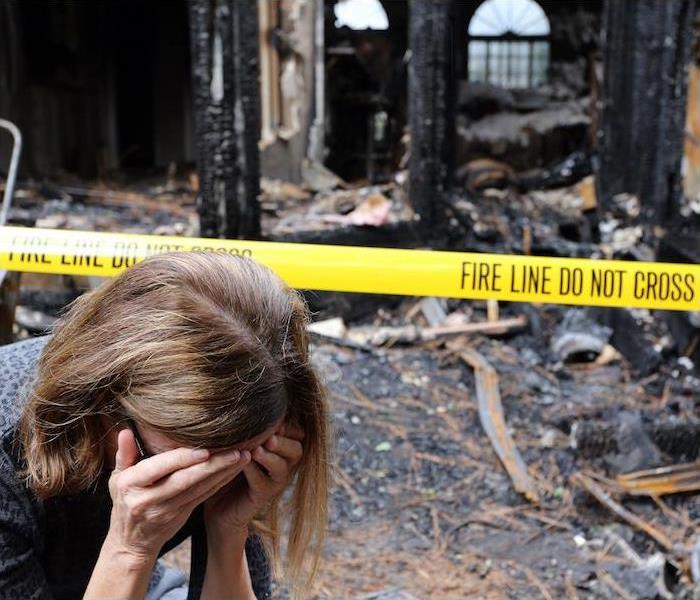 If your home is damaged in a house fire, SERVPRO of Pascagoula is here to help. Contact us for any fire restoration needs.
If your home is damaged in a house fire, SERVPRO of Pascagoula is here to help. Contact us for any fire restoration needs.
If you have experienced a house fire, you understand exactly how disheartening it can be. Even for fires that are put out right away, smoke, soot and flames can still cause significant damages in a short span of time and be a traumatizing experience.
Though the aftermath is difficult to navigate, we have assembled some tips for helping you navigate the aftermath of a fire so you can make sure you are handling it as efficiently as possible.
Tips to Help You Navigate the Aftermath of a Fire
Prepare yourself for what to expect. While we have likely all seen photos or videos of fire damage, seeing it firsthand in your own home is always different. To allow smoke to escape, firefighters often break glass and doors, and because of how smoke travels, soot may be on items that were nowhere near the flames. If the fire was extinguished with water, there may also be moisture damage to items nearby as well.
Wait to enter your home. Though things may appear to not be damaged enough to make your home a hazard, never enter without first checking with officials to determine that everything is safe. A fire can undermine a home’s structural elements via invisible damage, and a second combustion may even be possible depending on the source of the fire. Make sure to always wait for the OK before reentering your home.
Contact your insurance company. Once you can reenter the home and assess the damage, you should contact your insurance provider to let them know what happened and learn about coverage in the event of a fire. It is important to not make any changes to the home before you contact them in order to not unwittingly do something to sabotage your claim.
Document the damages. To help you prepare for your insurance claim before you begin cleaning up, take a complete inventory of what has been damaged and be sure to snap clear photographs. This will not only help your claim, but it will also help you keep track of what to replace around the house.
Contact your restoration company. Working with the right restoration company can really make all the difference during your recovery period after a fire. Fires take a significant emotional toll on the entire family, so working with a company that you trust is a great way to gain peace of mind throughout the recovery process.
If your home is damaged in a house fire, you can count on us to help you. Get in touch at any hour for a quick response.
The Weather is Not the Only Thing Hot During the Summer
2/5/2020 (Permalink)
Summer is a time to get out and have fun. The weather is not the only thing that heats up during these few months.
Be aware of the risk of fires and prepare by checking the batteries in your smoke detectors and having functioning fire extinguishers.
5,700 homes experience grill related fires every year. In fact, 57% of fires happen within four months; May, June, July, and August. Grill fires happen when someone mishandles the igniting of the grill with a spark or flame. Mechanical issues such as broken containers or pipes also can increase the risk of causing a fire.
For precautionary measures, before the startup of grilling season check your grills condition, clean it, check the drip pan, and anything else that could potentially have grease on it from previous cookouts. Inspect each part of your barbecue pit to make sure everything is attached properly. Also, be sure you are in a grill-friendly environment free of branches, roofs or any sort of overhang when igniting the grill. Be prepared for a fire, as grease and fat are likely to catch on fire. Keep baking soda near the grill in case a grease fire breakout. If you find yourself faced with a fire emergency, do not hesitate to call SERVPRO of Pascagoula at 228-475-3473
We will get to the Root when Dealing with Soot
2/5/2020 (Permalink)
After a fire is put out, property owners expect the need to replace any items that have burned. What many do not consider is the items that were not destroyed by the fire, but affected by the smoke. Smoke, the byproduct of materials burning, creates a lasting odor that is difficult to remove.
As smoke rises, it can seep into your walls, ceiling, and roof. Once the smoke fills your your attic or crawl space, it increases the likelihood of moving into your HVAC.
How SERVPRO Restores Your Property After A Fire
SERVPRO of Pascagoula is trained and has years of experience in removing and replacing insulation before your HVAC is affected. We get right to the root of the issue when dealing with smoke and soot. When we are on the job, we ensure that not only will your property be restored, but it is handled quickly before further damage ensues. Your job is to rest assured your odor problems are being taken of, and our job is to make it "Like it never even happened."
Extension Cords Safety Tips
11/15/2019 (Permalink)
Extension cords are one of the most commonly misused items in a home and at the office. To ensure safety use these following tips when using extension cords.
- Determine the correct wattage required to power the device and be sure to select the correct size of the extension cord. If connecting two or more devices, add together the wattage rating for all devices to prevent overload.
- Select the appropriate extension cord for using devices indoor or outdoor.
- Do not use extension cords that are cut or damaged. Touching the exposed strand of wire can give someone electric shock or burn.
- Be sure to unplug extension cords when finished using due to the cord will still conduct electricity until it is unplugged.
- Running a cord under carpet or across a doorway is unsafe.
Fire Damage:Common Causes
11/8/2019 (Permalink)
Home electrical fires account for 51,000 fires each year, and an estimated $1.3 billion in property damage. Learn these common causes of fire damage to prevent fire damage in your home or business:
Many electrical fires are caused by faulty electrical outlets or outdated appliances. Frayed appliance cords can also lead to electrical fires. Under no circumstances should you ever remove the ground plug from an appliance cord. These appliance cords are only to be used with outlets that can handle the extra amount of electricity.
Another cause of electrical fires is the misuse of extension cords. Extension cords are only to be used on a temporary basis and not as permanent wiring. Extension cords can overheat and cause fires when not used properly. Never should you run extension cords through walls and ceilings, and never use nails or staples to hold an extension cord in place.
Space heaters are also a major cause of electrical fires. Space heaters should always be kept on a flat, level surface to prevent being turned over. These portable heaters are often placed too close to curtains, beds, and other combustible surfaces. Remember to always keep space heaters at least three feet from items that can burn.
SERVPRO of Pascagoula gets to the Root when Dealing with Soot
10/31/2019 (Permalink)
More Problems Caused By Fire
After a fire is put out, property owners expect the need to replace any items that have burned. What many do not consider is the items that were not destroyed by the fire, but affected by the smoke. Smoke, the byproduct of materials burning, creates a lasting odor that is difficult to remove.
As smoke rises, it can seep into your walls, ceilings, and roof. Once the smoke fills your attic or crawl space, it increases the likelihood of moving into your HVAC.
How SERVPRO Restores Your Property After A Fire
SERVPRO of Pascagoula, MS is trained and has years of experience in removing and replacing insulation before your HVAC is affected. We get right to the root of the issue when dealing with smoke and soot. When we are on the job, we ensure that not only will your property be restored, but it is handled quickly before further damage ensues. Your job is to rest assured your odor problems are being taken of, and our job is to make it “Like it never even happened.”
Call us today at 228-475-3403
Teach the children
10/17/2019 (Permalink)
What happens when the fire alarm goes off in the night?
Do the kids know what to do?
Do they know where to go?
What happens after the alarm stops?
Gather everyone in your household and make a plan. Walk through your home and inspect all possible exits and escape routes. Households with children should consider drawing a floor plan of your home, marking two ways out of each room, including windows and doors. Also, mark the location of each smoke alarm.
Practice your home fire escape plan twice a year, making the drill as realistic as possible.
Allow children to master fire escape planning and practice before holding a fire drill at night when they are sleeping. The subject is to practice, not frighten, so telling children there will be a drill before they go to bed can be as effective as a surprise drill.
Choose an outside meeting place (i.e. neighbor's house, a light post, mailbox, or stop sign) a safe distance in front of your home where everyone can meet after they've escaped. Make sure to mark the location of the meeting place on your escape plan.
Once you're out, stay out! Under no circumstances should you ever go back into a burning building. If someone is missing, inform the fire department dispatcher when you call. Firefighters have the skills and equipment to perform rescues.
Once the emergency crews leave call us, we will do what is needed to get you back into your clean home, "like it never even happened."
SERVPRO of Pascagoula 228-475-3403
SERVPRO of Pascagoula Excels at Fire Damage Restoration
9/26/2018 (Permalink)
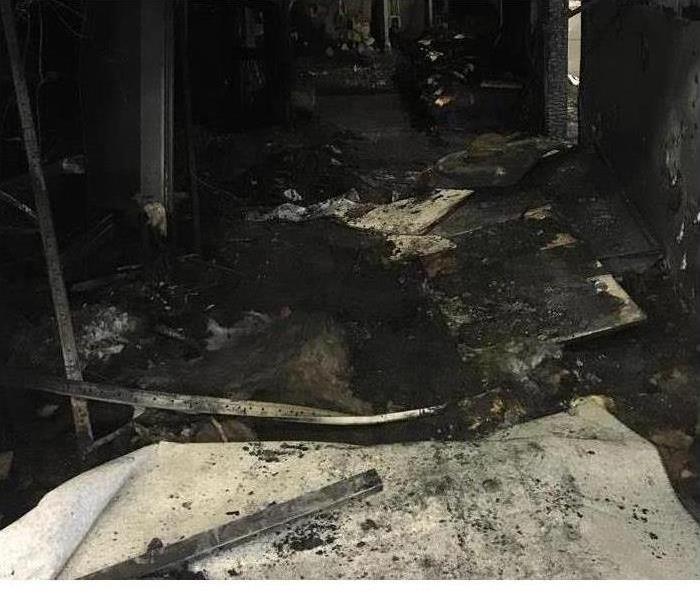
Fire damage can be a devastating event. Once your property has been impacted by a fire, hiring a high-quality fire damage restoration service is important. To ensure that you can get the professional service you need and deserve, browse through these tips and tricks outlined in this quick reference guide courtesy of SERVPRO.
Request a Referral From Your Insurance Company. The best way to find the ideal fire damage restoration company is through a referral. Who has dealt with these restoration companies more than your insurance company? Ask your agent or adjuster for a referral and chances are SERVPRO will be at the top of the list. Past experiences of cooperation and coordination of the fire damage restoration process make the project easier to expediently complete while keeping costs down. If a claim is involved, we can provide an estimate complying with insurance industry guidelines. This step is also advantageous because it ensures that SERVPRO and your insurance provider can work together throughout the remediation process, which alleviates stress for you through a difficult time.
Ensure that the Fire Damage Restoration Company can handle your needs. After a house fire, water pooling from the extinguishing efforts could be causing secondary structural and furnishings damage in your home. Standing water must be extracted immediately before, during, and after the assessment of damages has been provided to you, if the level of damage is extensive.
SERVPRO of Pascagoula offers for fire damage restoration:
• HVAC system cleaning: removal of smoke odor and soot as well as moisture.
• Debris removal: burnt or water-logged debris. Cleaning of items, and possessions on location or at our facility. Our IICRC-certified technicians will provide you with the high quality fire damage restoration services you require with empathy.
• Extensive drying: water extraction by pumps, and wet-vacs, air movers, and dehumidifiers finish the drying, then checked with meters, final documentation that the structure is dry to help prevent mold growth.
• Structural rebuild: restore fire damaged building materials when possible, replace when necessary. Keeps the cost and repair time down.
Once the fire in your home has been extinguished, get together with your insurance adjuster and SERVPRO of Pascagoula. We will take the stressful burden from you and provide fair, expedient, and cost-effective results. Our goal is to get you back home as soon as possible. We will also have a final walk-through with you to ensure your complete satisfaction with the restoration of your fire-damaged home in the Biloxi, Ocean Springs, Gulfport, and Pascagoula area.
SERVPRO of Pascagoula is Locally Owned, with National Resources.
We are proud to be an active member of these gulf coast communities. SERVPRO of Pascagoula is locally owned and operated so we’re nearby and ready to help residents with any size smoke and fire damage emergencies. Call us 24/7 for help. (228) 475-3473.
What can we offer you after your fire damage?
9/19/2018 (Permalink)
Gulfport, MS Fire Damage Restoration including Smoke and Soot Cleanup| SERVPRO of Biloxi / Ocean Springs / Gulfport / Pascagoula
Our Fire Damage Restoration Services
Every fire damage situation is a little different and requires a unique solution, but the general process stays the same. When various materials burn, the soot they create differs greatly and requires a specific cleaning procedure. The steps listed below illustrate our process for the “typical” fire damage restoration. Learn more about our fire damage restoration process.
- Emergency Contact
- Inspection and Fire Damage Assessment
- Immediate Board-Up and Roof Tarp Service (if needed)
- Water Removal and Drying (if water damage is present)
- Removal of Smoke and Soot from All Surfaces
- Cleaning and Repair
- Restoration
We are Always Here to Help! 228-475-3473
Fire Webs
9/19/2018 (Permalink)
Most people do not know that when a fire happens it can cause webs in your home that look like cobwebs. The photo shows what we call smoke webs. You can google this and it will give you the reason behind it, but let us explain it to you, it’s when plastics burn, the smoke carries a stronger charge than when wood, cotton or paper burns. Sometimes, this causes smoke residue to form the smoke webs. Depending on what exactly the webs are made of, they can be sticky, smeary, and more difficult to clean.
Highly Trained Restoration Specialists
Our SERVPRO Professionals here at SERVPRO of Pascagoula are highly trained in property restoration. From initial and ongoing training at SERVPRO's Corporate Training Facility to regular IICRC industry certifications, our Professionals are equipped with the knowledge to restore your property. The SERVPRO training program includes the follow:
- IICRC Training
- Employee Certification Training
- Initial Franchise Training
- e-Learnings
- Continuing Education Classes
Cooking and Fire Prevention Safety
9/19/2018 (Permalink)
The Holidays are coming and we will be doing more cooking. And unless you live on takeout and fast food, cooking is necessary to feed your family. But not all of us were born Emeril Lagasse or Gordon Ramsay. We novice chefs need a little more help. And sometimes, accidents happen. According to the NFPA (National Fire Prevention Association) Two-thirds (67%) of home cooking fires started with the ignition of food or other cooking materials. Before you cook up a disaster, know how to put out potential fires.
How to prevent a kitchen fire
Stay nearby, this sounds unnecessary to say but unattended cooking was by far the leading contributing factor in fires between 2007 -2011.
According to the NFPA, unattended cooking is the leading cause of kitchen fires. Don’t leave your boiling spaghetti alone!
Place your products elsewhere
Keep your towels, paper towels and pot holders away from open flames because they pose a fire hazard.
Have the proper tools
Besides a lid and a fire extinguisher, ensure smoke detectors are working properly. Test them biannually.
What to use to put out kitchen fire
Cookware lid
When cooking on a stove top, always keep a lid nearby that fits the pot or pan you’re using. That way, if the food catches fire, you can put the lid on to quickly smother the flames.
Salt
Use a handful of salt, which cuts off the oxygen supply and smothers the fire.
Baking soda
Like salt, baking soda works to put out grease fires. For example, if grease falls to the bottom of the oven and catches fire, covering it with baking soda should put it out.
Fire extinguisher
If you don’t have access to salt, baking soda or water, use a fire extinguisher. Keep one handy in your kitchen in case of emergencies, Reith and Sexton suggest. Know where it is and how to use it.
Water
If your towel or pot holder catches fire, put it in the kitchen sink and douse it with water. Never use water to put out a grease fire. Pouring water onto a grease fire will make a bad situation worse. This can cause burning oil to splatter or even bigger flames to form. Burning drops of grease or oil can spread quickly out of control.
How to put out a kitchen fire
Smother the flames Fire needs oxygen to thrive. Thwart flames by cutting off their supply.
Turn off the heat
Remember to turn the burner off when a fire occurs. If the fire starts in an appliance such as your oven or microwave, immediately cut the power source and close the door. If you catch it early enough, there won’t be enough oxygen to keep the fire going, and the fire will die.
Evacuate
Don’t be a hero. If a fire gets out of hand, you should get out of there. According to the National Fire Protection Association, 55 percent of non-fatal home cooking fire injuries occurred when the victims tried fighting the fire themselves.
Call 911
Emergency service providers undergo many hours of training to handle these situations, so avoid putting yourself at unnecessary risk. Let professionals who know the risks and dangers handle it.
Be sure to stay safe and for more information and tips on what to do and not to do, see our website SERVPRO of Pascagoula. After the fire department leaves, there will be damage, call SERVPRO of Pascagoula to help make it “Like it never even happened”. It’s best to call us directly at 228-475-3473.
SERVPRO & Odor Eliminating
8/23/2018 (Permalink)
As experts in deodorization, SERVPRO of Pascagoula is trained to eliminate odors.
Fires can be especially devastating to your home or business. After the fire trucks leave, your property will likely suffer from not only fire and smoke damage, but also widespread water damage and flooding from firefighting efforts. SERVPRO Franchise Professionals have specialized in fire and water damage restoration training and experience to quickly clean up and restore your home to pre-fire condition. They also can remove the pervasive smoke odor by doing Thermal fogging.
What is Thermal fogging?
Thermal fogging is an effective smoke odor removal procedure because it recreates the fire related properties of heat and pressurization. Porous material pick up thermally activated deodorant droplets in the same manner in which they picked up the smoke odors, closely duplicating what occurs during a fire.
HOW IT WORKS:
Negative pressure is created by the gas flow to the engine tube, causing the intake valves to open. This allows more air to pass through the venturi of the carburetor, which aspirates fuel from the carburetor in a combustion chamber mixture that is ignited by the spark plug at many times per second. The exhaust emission of a pulse-jet engine is low in pollutant components because the combustion is completed and burned to non-pollutant end products.
Call SERVPRO of Pascagoula for any questions or services.
228-475-3473
The Importance of Having a Fire Extinguisher in Your Home or Business
8/23/2018 (Permalink)
You could save your home from fire with a fire extinguisher at your ready.
Close your eyes and imagine. You’re at home, or maybe in the office, and you smell ... smoke? Definitely smoke. Fire! You don’t panic, because you’re not the type and you’re prepared. You grab the nearest fire extinguisher, find the flames. You get ready, aim.... and suddenly realize you don’t know how this thing works.
Fire extinguishers can be the first line of defense if fire breaks out in your home or business, but they won’t do you any good if you don’t know how to use them or have the wrong extinguisher for the job. When it comes to fire, plan, prepare and remain calm. Knowing how, when and why to use your fire extinguisher—not to mention which fire extinguisher to use—will increase both your safety and peace of mind knowing you can protect you and your belonging from fire damage.
When to Use a Fire Extinguisher
Home or office, when a fire breaks out you have moments to decide: fight or flight? If you feel even the slightest doubt about handling it yourself, move everyone to a safe place and call 911. Ditto if you don’t know how to use your extinguisher or aren’t sure it’s the right class for the fire you’re fighting; better to let the pros handle it than to try to navigate the learning curve mid-fire.
If you decide you can safely put out the fire, grab the extinguisher and get busy, after you locate a safe way out. If you spot a clear exit but it doesn’t look to stay clear long, get out now.
What Kind of Extinguisher to Use
Home- and business owners can choose from five types of fire extinguishers:
- Class A: for a fire involving normal combustibles and flammables, including cloth, paper and wood
- Class B: for a fire involving flammable liquids like gas, oil, paint, paint thinner and solvents
- Class C: to fight a fire involving electrical equipment/appliances that are plugged in and receiving power—electric drills, table saws, computer equipment, televisions, wiring and fuse boxes, for example
- Class D: to put out a fire involving combustible metals—magnesium, sodium, zirconium, etc. (Note: Don’t try to fight this kind of fire unless you’ve been specifically trained for it!)
- Class K: for fires typically found in restaurants, involving cooking oil and commercial-grade cooking equipment
Some fires involve several or all of the above. Fortunately, fire extinguishers are labeled not only with the types of fire they’re designed to fight, but with the types of fire you should avoid using them on. Example: Never use a Class A extinguisher on a Class B or C fire—the results could be deadly!
Fire Extinguisher How-to
- Stand six to eight feet away from the flames.
- Make sure you have a clear exit, in case the fire spreads or flames out of control.
- Pull the pin to unlock the operating lever.
- Aim the hose at the base of the fire.
- Press the lever located above the handle to release the agent.
- Use a back-and-forth sweeping motion to saturate the base of the fire until the flames are extinguished.
- Continue the process if the fire re-ignites.
- If the fire doesn’t go out or spreads, get to safety.
Extinguisher Safety Tips
- Install fire extinguishers in areas where fires are likely to break out, including kitchens and break rooms.
- Check periodically to make sure all fire extinguishers are fully charged.
- Show every family member or employee where the fire extinguishers and fire alarms are located.
- Train yourself, your loved ones and your co-workers to use the equipment properly.
Even with a fire extinguisher, some fire damage will occur. When this happens, call your local SERVPRO of Pascagoula (228)475-3473. They live and work in the local community just like you and they can help make it, "Like it never even happened."
Soot Damage Caused by Fire
8/23/2018 (Permalink)
When a fire happens, it causes soot. (Soot: A black powdery or flaky substance consisting largely of amorphous carbon, produced by the incomplete burning of organic matter.) If the HVAC system is on during a fire then it can spread the soot in the house by circulating the air throughout.
While it may take some time to remediate a fire, it is important that the soot is wiped down with appropriate cleaning agents and in a timely manner. If soot is left on any surface to long it can breakdown that surface and cause damage to walls, furniture, and other surfaces.
SERVPRO of Biloxi, Ocean Springs, Gulfport, and Pascagoula can do Fire restoration.
This picture shows just one wipe down of a wall in the home where we did a structure clean after a fire. Some surfaces can take longer to clean, depending on the texture of the wall and how much soot there is on the surface.
Highly Trained Restoration Specialists
Our SERVPRO Professionals are highly trained in property restoration. From initial and ongoing training at SERVPRO's Corporate Training Facility to regular IICRC industry certifications, our Professionals are equipped with the knowledge to restore your property. The SERVPRO training program includes the follow:
- IICRC Training
- Employee Certification Training
- Initial Franchise Training
- e-Learnings
- Continuing Education Classes

 24/7 Emergency Service
24/7 Emergency Service



